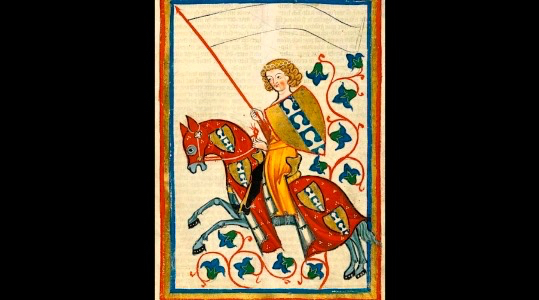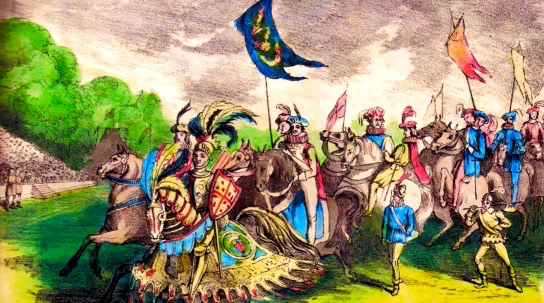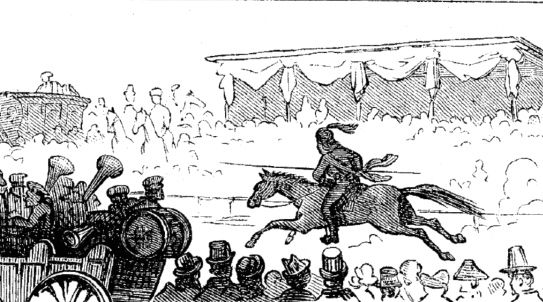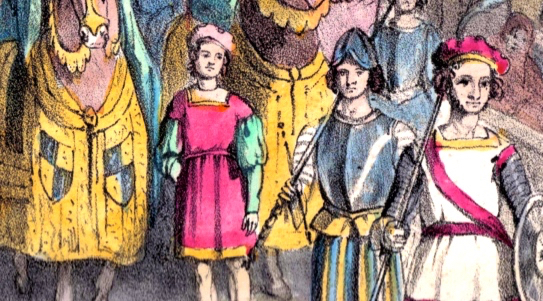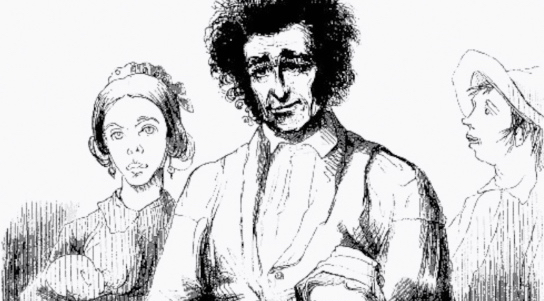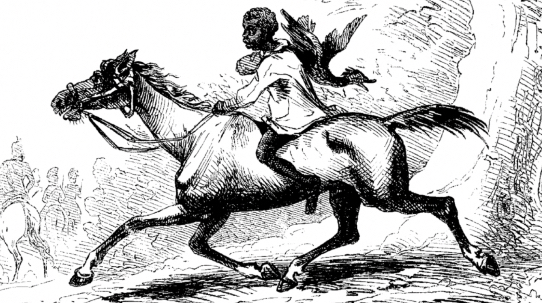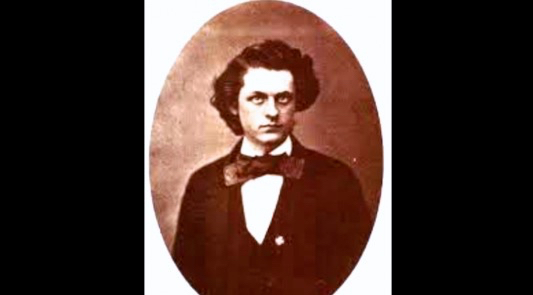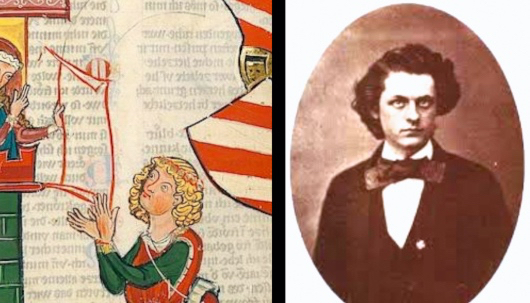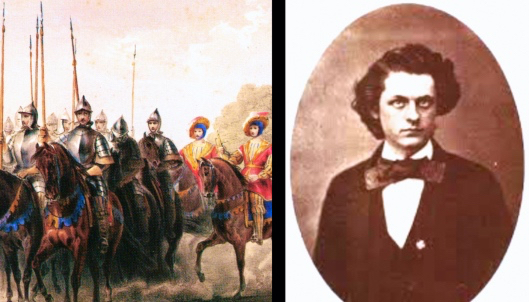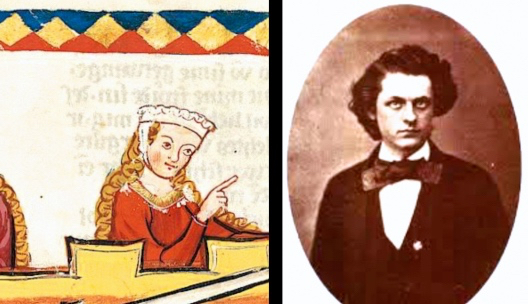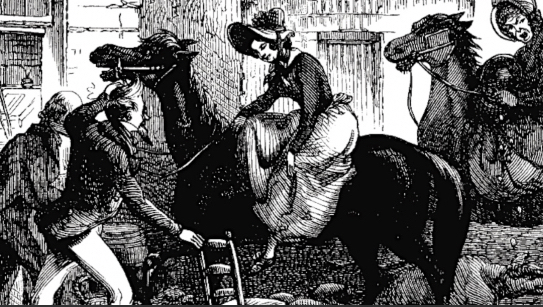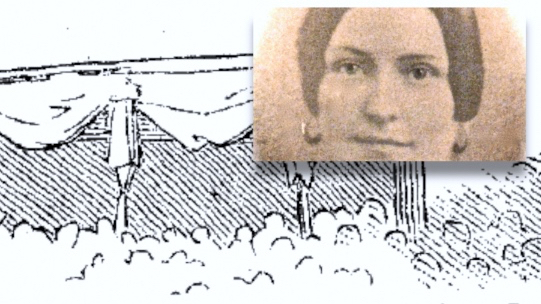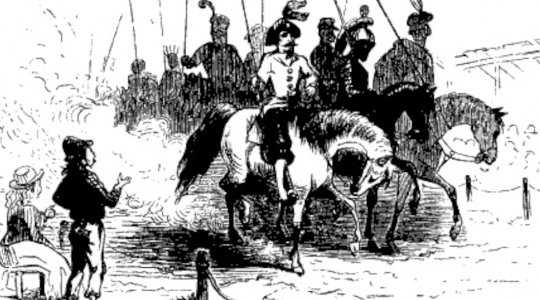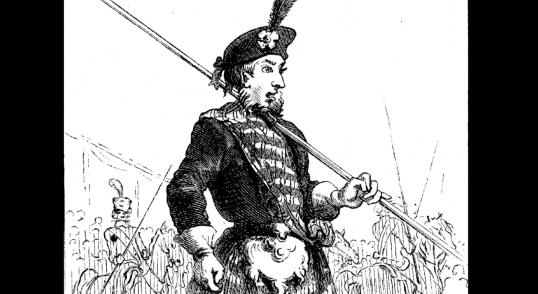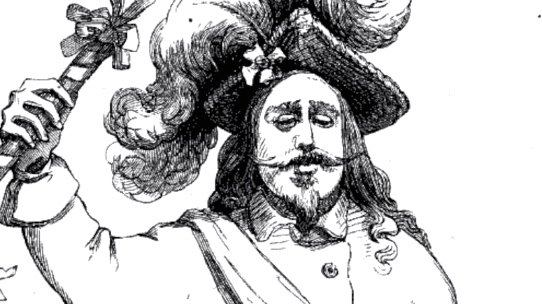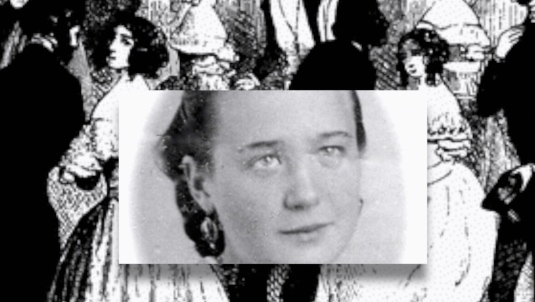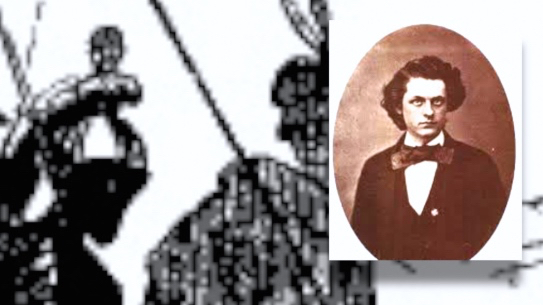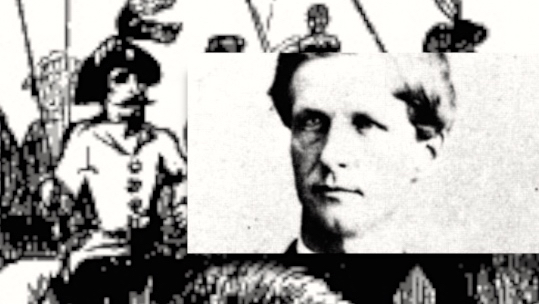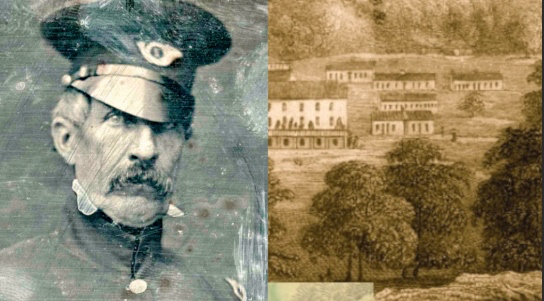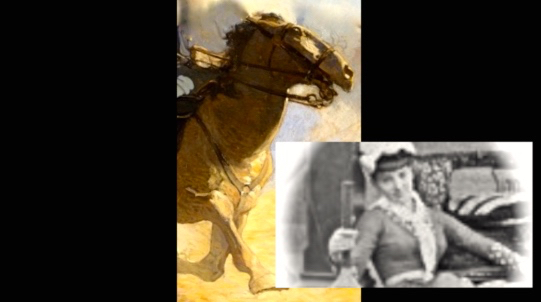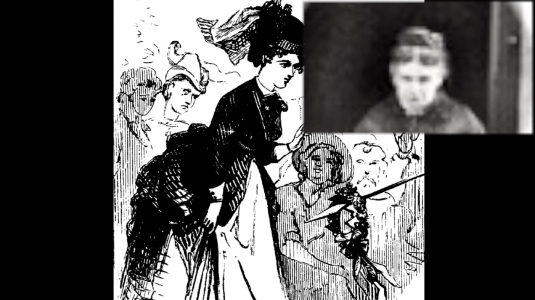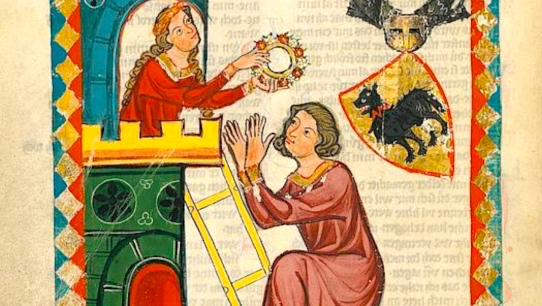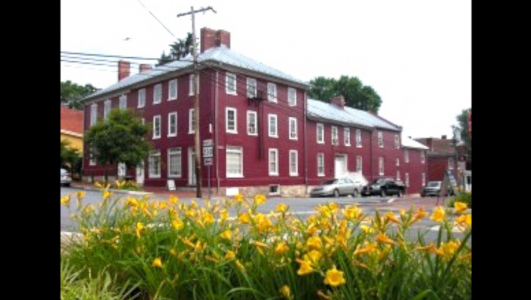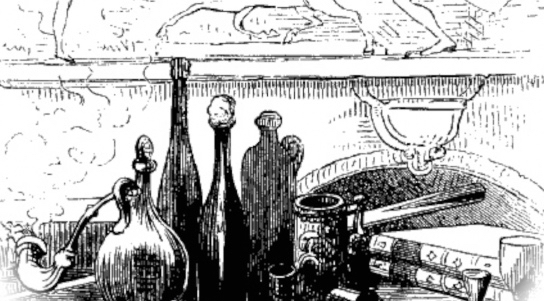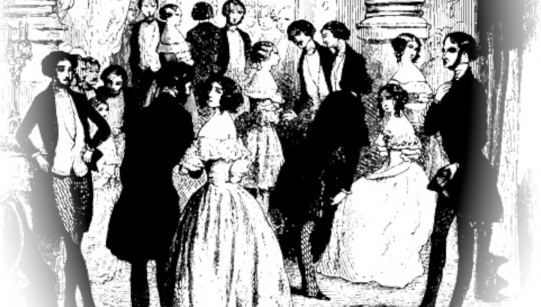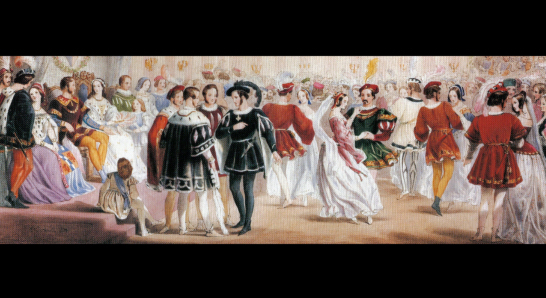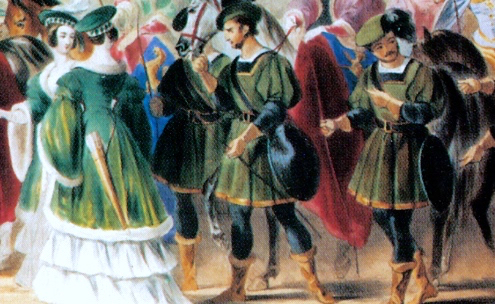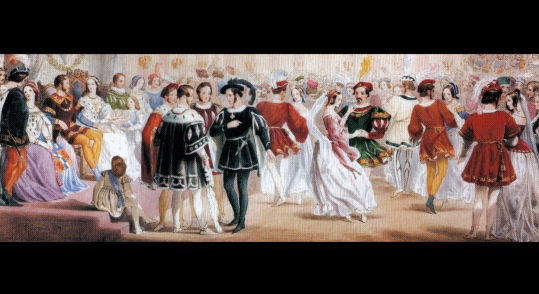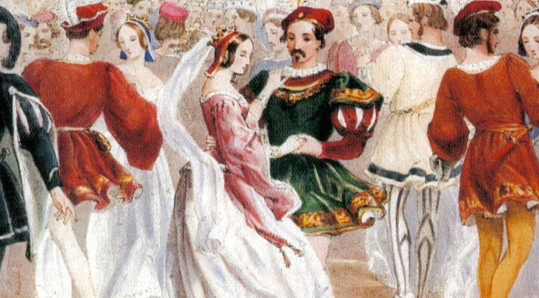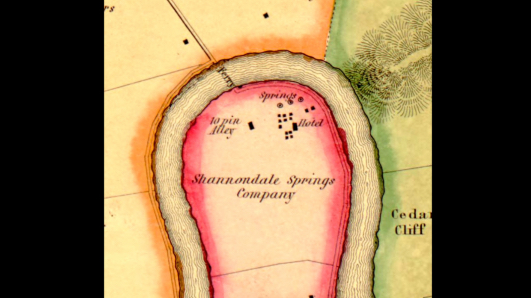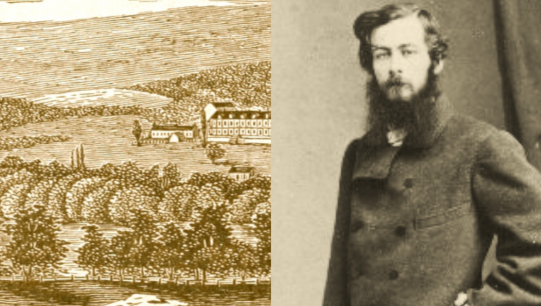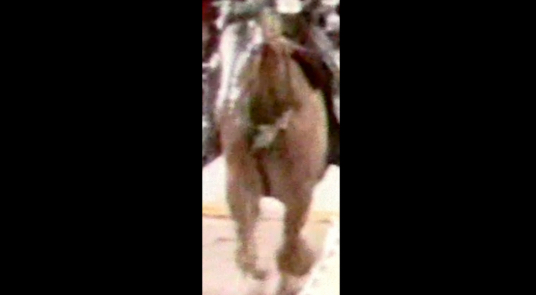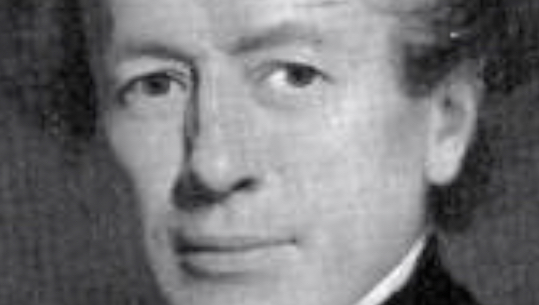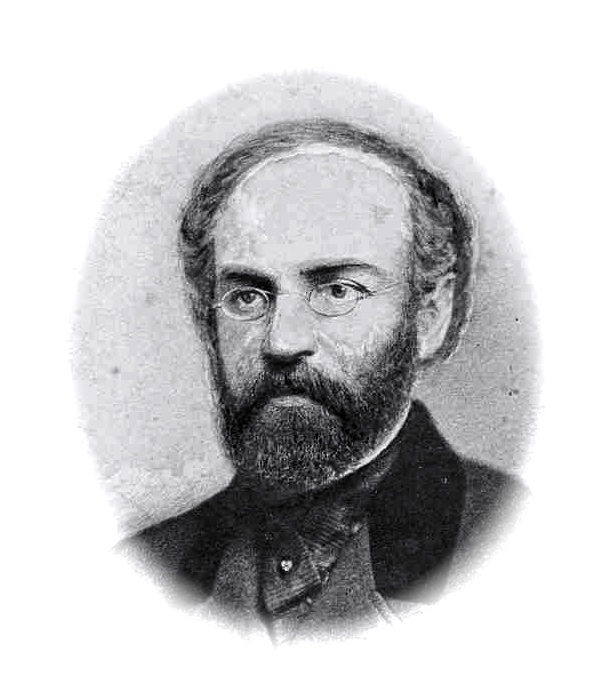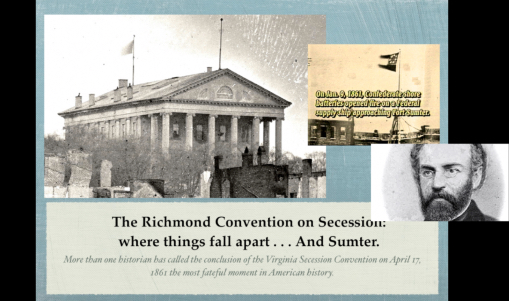7907 words
TRT: 16:38 Video link (1) (1784-1872): https://www.youtube.com/watch?v=dGFRxWO0B4Q&feature=youtu.be
TRT: 13:57 Video link (2) (1861-1872): https://youtu.be/yJJBmrwtlxE
Images on Flickr: 60
https://www.flickr.com/photos/jimsurkamp/albums/72157644792767614
With support from American Public University System (apus.edu). (The sentiments expressed do not in any way reflect modern-day policies of APUS, and are intended to encourage fact-based exchange for a better understanding of our nation’s foundational values.
Patriarch R. D. Shepherd’s Homecoming 1859
About how a young boy from Shepherdstown built a massive fortune through work, smarts and an act of his own heroism for another; then, turns around and gives much of it back as McMurran Hall, an Almshouse in New Orleans and other gifts.
R. D. Shepherd had a strict, flinty way, but on paper and in the world at large did his huge generosities stand tall, pervade the landscape and enrich the hearts of humanity.
Seventy-five-year-old Rezin Davis Shepherd, described by the New Orleans Picayune as having “the largest and most productive estate which has ever been held by one person in this city and State” – began the construction Thursday, October 6th, 1859 of a gift to his home town, this time right on lot no. 1 in Shepherdstown, the very lot where he was born in August 1, 1784.
Who knew that in ten fleeting days – October 16th – history would be blown off its hinges by the John Brown raiders’ attack fifteen miles away at Harpers Ferry, the match that lit the simmering fever of division between
North and South over slavery and claimed rights to secede from the Union. The tempest raged back and forth over the county and the town for 1300 hundred days of pitiless strife and war before settling back into being a barren, alien landscape.
RD’s (“RD” henceforth for “Rezin Davis Shepherd”) building – beautiful as were all his buildings remains a Greek Revival style, with a two-story-portico and Corinthian flourishes. But in the 1860s, it would bear witness to all that was rent asunder and itself narrowly avoid destruction, unlike a less lucky altruistic juggernaut project of Shepherd’s in New Orleans – the palatial Almshouse. But this, RD’s Town Hall, first named, would eventually live a “long, happy life” first as the County Court, then into its present-day majesty as the signature building of Shepherd University.
Growing Up – RD Learns the Trade:
was sent to New Orleans to assure a good return on a huge shipment of British goods his firm had purchased for New Orleans’ customers. Then his first big “killing” was with another fresh-faced, hard-driving Taylor colleague, James McDonough. Wrote the Picayune: In October, 1803, it was well known throughout the country that Louisiana had been purchased by the United States. Mr. Taylor was the only merchant who seemed to comprehend the profit from one consequence of the this great political event.
Coming into his own, he married Lucy Taylor Gorham of Barnstable, Massachusetts in 1808, who was “a niece and adopted daughter” of Taylor. On August 22nd, 1809, their only child, Ellen Shepherd, was born in Louisiana. (Lucy would die in 1814).
.
It was at this juncture the penchant of RD for regular, publicity-averse benefactions took root, in the moment of his willed defiance against a direct military order to work, instead, to save one particular wounded man, left for dead in war, a man who himself would live on to become the epitome of the proverbial Good Man, albeit
extraordinarily wealthy. His name was Judah Touro, a top-hatted, but humble Jewish businessman who believed in respect for all religions and daily applications of the code of good works. He was beloved throughout his circles and region as “the Israelite without guile.”
Wrote Author Colyar:
While carrying ammunition on the battle field Jan. 1, 1815 Mr. Touro was struck by a 12-pound shot which tore
a large mass of flesh from the thigh and prostrated him among the dead and dying. Mr. Rezin Shepherd, was carrying a special order from Commodore Patterson across the river to the main army. On reaching the bank he met a friend, who told him his friend Touro was dead. Inquiring where he was, Shepherd was informed that he had been taken to
an old building in the rear of Jackson’s headquarters. Forgetting his orders, Mr. Shepherd went immediately to the place and found he was not dead, but, as the surgeon said, in a dying condition. Disregarding what the surgeon said, Shepherd got a cart, put him in it, administered stimulants, and took Touro to his own house. He then procured nurses, and by the closest attention, Mr. Touro’s life was saved. Mr. Shepherd returned late in the day,
having performed his mission, to find Commodore Patterson in a bad humor, and, speaking severely to him, the latter said: “Commodore, you can hang or shoot me, and it will be all right, but my best friend needed my assistance, and nothing on earth could have induced me to neglect him.”
RD’s businesses continued to grow exponentially and his brother, James Hervey Shepherd, was summoned from Shepherdstown to assist.
1817-1837 – RD travels to Europe, settles in Boston doting on his daughter’s education.
1822 – RD maintained his businesses and shipping concerns at 5 Pearl Street and nearby 28 Indian Wharf house.
He has her portrait painted by Thomas Sully in 1831, a few years after Gilbert Stuart is commissioned to paint his own portrait. (Stuart died in 1828).
1829, April 20 – Ellen Shepherd marries Gorham Brooks of Medford, Massachusetts.
1834 – RD commissions Samuel Fuller to build the 480-ton merchant ship in Medford, named after his daughter, the “Ellen Brooks.”
1837 – James Hervey Shepherd dies. RD returns to run businesses in New Orleans.
1837, July 23 – Ellen (Shepherd) Brooks and her husband, usually in Boston or Medford, temporarily reside in Baltimore.
1837-1865 – RD’s nephew, Henry Shepherd Jr., who was brought up in his uncle’s counting room, gradually assumes the role as RD’s agent in New Orleans.
1839 – RD’s commissioned painting of the ship the “Ellen Brooks” is completed, attributed to Samuel Walters (British, 1811-1882), called “Ellen Brooks, Off Holyhead, Homeward Bound.”
1841 – RD buys 468 acres of land and begins building Wild Goose Farm, but not yet living there full-time; he also pays for most of the remodeling of the original Trinity Episcopal Church in Shepherdstown.
1842, June – RD signs a petition to Congress along with numerous other planters and sugar manufacturers in the state of Louisiana that asks for an increase in the duties on imported sugar.
1849 – RD places responsibilities on his eighteen-year-old nephew, Henry Shepherd Jr., who would become his agent in New Orleans through the Civil War, allowing RD to return more permanently to his Wild Goose Farm.
1850 – In Shepherdstown & Wild Goose Farm; the 1850 Census shows 66-year-old RD with a period worth of $240,000, living only with workmen: 26-year-old German-born master stonemason Conrad Smith and an overseer. Although one account states Touro stipulated that RD free his enslaved persons, RD is shown to having owned numerous persons, enumerated in both the 1850 and 1860 Census slave schedules.
1854, January 6th – Touro’s Will makes Rezin Davis Shepherd residuary legatee of the estate and executor; $395,000 is willed to specific recipients. A sum iof $80,000 is set aside for a palatial almshouse, with the added stipulation to RD that more sums, if needed, should be used to complete this priority project.
Judah Touro made out his will January 6, 1854 a few days before his death that said:
As regards my other designated executor, say my dear, old, and devoted friend, Rezin Davis Shepherd, to whom, under Divine Providence, I am greatly indebted for the preservation of my life when I was wounded on the 1st of January, 1815, I hereby appoint and institute him, the said Rezin Davis Shepherd, after payment of my particular legacies, and the debts of my succession, the universal legatee of the rest and residue of my estates, movable and immovable.
RD continued his projects both in New Orleans and Shepherdstown. He had already funded remodeling of the Trinity
Episcopal Church. He planned a clock and bell to its original church then after some legal squabbling – the clock – to everyone’s assent – was reassigned to be inserted in to the new government building.
The Shepherd Family is Scattered By War:
The war hit the family hard. Most of the young men enlisted in Virginia units. RD had to recalibrate his business strategies. Wrote the Richmond Daily Dispatch: June 8, 1861:
The New Orleans Delta states that R. D. Shepherd, Esq., who is now at an advanced time of life, living on his beautiful farm near Shepherdstown, Virginia, has directed his agent in New Orleans to pay over to the treasurer of the Confederate States a large sum of money, including, it is said, his whole annual income from rents in that city — the largest income enjoyed by any property holder — to be applied to the defence of the rights and the support of the independence of the South.
In the spring of 1862 when Federal General Banks with his army entered into Jefferson County, RD took refuge in Boston with his daughter.
As the war progressed, its maw of destruction came closer to Shepherdstown’s nearly complete building. 130,000 troops moved in the area in September, 1862 for the bloody Maryland Campaign, just across the Potomac river. Wounded from the nearby battles poured into Shepherdstown, putting the unfinished Town Hall into service as an outdoor hospital.
Wrote Mary Bedinger Mitchell:
The unfinished Town Hall had stood in naked ugliness for many a long day. Somebody threw a few rough boards across the beams, placed piles of straw over them, laid down single planks to walk upon, and lo, it was a hospital at once.
There were six churches and they were all full, the barn-like place known as the Drill Room, all the private houses after their capacity, the shops and empty buildings, the school-houses – every inch of space and yet the cry was for more room.
We went about our work with pale faces and trembling hands, yet trying to appear composed for the sake of our patients, who were much excited. We could hear the incessant explosions of artillery, the shrieking whistles of the shells, and the sharper, deadlier more thrilling roll of musketry; while every now and then the echo of some charging cheer would come, borne by the wind, and as the human voice would pierce that demoniacal clangor we would catch out breath and listen, and try not to sob, and turn back to the forlorn hospitals, to the suffering at our feet and before our eyes while imagination fainted at the thought of those other scenes hidden from us beyond the Potomac.
Had Federal General George McClellan crossed the Potomac and pursued General Lee’s scattered and mauled army, as historians have much criticized him since for not doing, Shepherdstown would have likely suffered greater damage, but, as it was, shells landed in the yards of the Lees and Morgans and one or two even hit Shepherd’s new Town Hall, but were of little consequence.
Property Losses in New Orleans:
January 29, 1864
From Brig. General James Bowen
Provost Marshal General
Department of the Gulf.
Sir:
The undersigned acting as the duly authorized agent and attorney in fact of Rezin Davis Shepherd, formerly the State of Virginia, but for more than eight months past residing with his daughter Mrs. Gorham Brooks in the city of Boston and State of Massachusetts, respectfully represents: That the said Shepherd is a loyal citizen of the United States and the true and lawful owner of the Brick Dwelling No. 18 Bourbon Street between Canal and Custom House Streets in the City of New Orleans and also of all the furniture and contents thereof: that in the month of June, 1862 Col. Stafford without show of authority, placed in possession of said house and contents, a man by the name of Horton or Houghton, who has ever since occupied and now occupied and uses the same as a Boarding House, and who never has paid any rent or compensation there and continually refused to do so.
Under the circumstances, the undersigned respectfully appeals to you, General, for relief, and asks that the matter be referred to Capt. Edward Page and Thomas Tileston, or other of them for investigation and that the aforesaid premises and contents be restored to the possession of the owner without delay; Henry Shepherd Jr.
Like The Town Hall, the huge, magnificent Almshouse in New Orleans remained unfinished, to be hit by a worse fate. Shepherd was charged by Touro’s will to first put $80,000 toward its construction, then be prepared to put more money into its construction- including even some of Shepherd’s own funds – as recipient of Touro’s residue.
Wrote the editors of the Times-Picayune in a long obituary:
In his native village he erected a splendid building, designed for a town hall, also a large academy, with beautiful grounds and a walk. He also deposited with the Mayor annually a large sum to buy fuel and provisions for the poor. He also erected the largest and most costly church in Jefferson County. Many other acts of public and private benevolence were performed by him in his quiet, furtive manner.
With war ended and when he was still healthy, RD had urged that his Town Hall become the County Court since the Charlestown courthouse was a battle-scarred ruin, especially from a shelling it took in the fall of 1863.
A Visitor Contemplates Charlestown’s Ruined Courthouse in mid-1865:
soldiers were scrawled along the walls. No torch had been applied to the wood-work, but the work of destruction had been performed by the hands of hilarious soldier-boys ripping up floors and pulling down laths and joists to the tune of “John Brown,” the swelling melody of the song, and the accompaniment of crashing partitions, reminding the citizens, who thought to have destroyed the old hero, that his soul was marching on. It was also a consolation to know that the court-house and jail would probably never be rebuilt, the county-seat having been removed from Charlestown to Shepherdstown — “forever,” say the resolute loyal citizens of Jefferson County, who rose to vote it back again.
The Shepherd boys who enlisted in Virginia companies each – over time – came home and were either buried in Elmwood Cemetery or the Shepherd Burial Ground – or lived.
Clarence Edward Shepherd became a teacher in Maryland.
While RD’s nephew and agent, Henry Shepherd Jr. was in New Orleans during the war, minding the family interests, three of his brothers were at war. The eldest Rezin Davis, his older brother who had a young family
since 1858, died of disease November 2, 1862 at his “river cottage” after imprisonment in the Old Capitol Prison for being an associate of Confederate spy, Redmond Burke. He left his widow, Elizabeth Boteler Stockton Shepherd, two children (Fannie and Alexandria) and a third (David) on the way. Probably first buried on his farm, Rezin Shepherd (a nephew of the patriarch) was reburied after peace came in the new Elmwood Cemetery. His site was joined by all his family as time unspooled.
Henry Jr.’s next brother, twenty-five year-old Abraham, enlisted May 22nd, 1861, would move over to Co. F. of the 17th Virginia Cavalry, get wounded at the third battle of Winchester in September 19, 1864, and become a prisoner of war. But he survived the war and died many years later in 1907.
Henry Jr.’s younger brother, James Touro (Truro) Shepherd, enlisted as a Private May 1st, 1861 in the 2nd Virginia Infantry. Like many, the rigors of marching under Gen. Stonewall Jackson proved an impetus to transfer out into a Cavalry regiment, and he joined Co. B of Gen. Stuart’s Horse Artillery under John Pelham, with a promotion to first lieutenant. His service record ends abruptly in the spring of 1862. The Shepherdstown Register in September, 1865 reported him having died in “Richmond City” in March, 1862. His marker dates his death as August 13, 1862, which may be the date of his re-internment into the family burial ground.
Two sons of James H. and his wife, Florence Hamtramck Shepherd were buried a few feet apart in the family burial ground on Shepherdstown’s New Street adjacent to the Episcopal rectory. Robert F. Shepherd, who joined Co. H, 2nd Va. Infantry, died May 4, 1862 of pneumonia.
Rezin Davis Shepherd was buried there too, in his own time.
He left all his fortune to his daughter, who, since 1855, had been a widow.
Wrote the Shepherdstown Register: A Large Estate – the late Rezin D. Shepherd left an estate valued at about $1,500,000 all of which goes to his daughter, Mrs. Brooks of Boston. He was born in 1784 (on the lot where the court house would be built). In 1809 he went to New Orleans and engaged in the commission business until 1849 and was the executor of the estate of the late Judah Touro. Mr. Shepherd was formerly a merchant in this city, residing on High Street. He accumulated a very large property in New Orleans and was reputed to be one of the wealthiest men of that city. Upon the breaking out of the rebellion, he returned to Boston and resided for a short time with his daughter and sole heir, Mrs. Gorham Brooks, widow of a son of the late Peter C. Brooks. His estate on High Street was formerly, we believe the property of Samuel Dexter.
The Massachusetts Historical Society today displays a cannon donated by the family and acquired by RD – a smaller version of the one that so severely wounded RD’s friend, Judah Touro.
The visiting journalist Trowbridge was proven wrong – the county seat DID go back to the Charlestown Courthouse. Wrote the editors of the Charlestown-based newspaper, The Spirit of Jefferson, in 1894:
:
The Normal College building, formerly the town hall, on Main Street, is a handsome structure, the gift of one of the Shepherd family, Rezin D. from which the town takes its name. You will remember that it was used as a court house since the war and the courts of Jefferson county were held there, one Judge Hall sitting on the bench. A political rape was perpetuated on Charlestown, the party in power, fitly termed radicals, thought they had a sure thing of it, built a jail and added a wing to either side of the town hall, but “the best laid schemes of mice and men gang af’t aglee.” The fellows that did all this mischief were turned down by the people and things took their normal shape and Charlestown was again the county seat.
Shepherd University began when the county seat of Jefferson County, West Virginia, was moved from Shepherdstown to Charles Town in July 1871. On February 27, 1872, the Legislature of West Virginia passed the following act: “That a branch of the State Normal School be and the same is hereby established at the building known as Shepherd College, in Shepherdstown, in the county of Jefferson.”
RD’s descendant, Shepherd Brooks, made it final when he deeded the property and building over to the School and a three-person board of trustees to maintain it.
As they say, settings reverse, the tide of life had gone out – and – came back in again.
References:
1840, 1850, 1860 Census for Jefferson County, Va.
Colyar, A.S. (1904). ”Life and times of Andrew Jackson; soldier–statesman–president.” Vol. 1. Nashville, TN: Press of Marshall & Bruce company. Print.
Colyar, A.S. (1904). ”Life and times of Andrew Jackson; soldier–statesman–president. Vol. 1.” Internet Archives: Digital Library of Free Books, Movies, Music, and Wayback Machine. 27 Oct. 2009. Web. 26 Sept. 2010.
. . . inflicting a ghastly wound, which tore off a large portion of the flesh. About this time Commodore Patterson sent his aide, Shepherd, with special orders across the river to the main army ; and on reaching the bank he met a friend, who told him his friend Touro was dead. Inquiring where he was, Shepherd was informed that he had been taken to an old building in the rear of Jackson’s headquarters. Forgetting his orders, Mr. Shepherd went immediately to the place and found he was not dead, but, as the surgeon said, in a dying condition. Disregarding what the surgeon said, Shepherd got a cart, put him in it, administered stimulants, and took him to his own house. He then procured nurses, and by the closest attention Mr. Touro’s life was saved. Mr. Shepherd returned late in the day, having performed his mission, to find Commodore Patterson in a bad humor, and, speaking severely to him, the latter said : “Commodore, you can hang or shoot me, and it will be all right ; but my best friend needed my assistance, and nothing on earth could have induced me to neglect him.” Hearing all, the Commodore was reconciled.
These men both became millionaires and both lived into old age. Mr. Touro was always known as “the Israelite without guile.” He died in 1854, leaving an immense estate, giving one-half of it to charities — charities selected with great discrimination — and the entire other half he gave to the man who had saved his life. Mr. Shepherd appropriated almost the entire half given to him in improving and beautifying the street on which they had both lived, and it is, and long has been, known as “Touro Street the Beautiful.” – pp. 294-295.
Everson, Dan. (2006). “A History of the National Conservation Training Center Property and Surrounding Area, Part Three: The Nineteenth Century.” Magazine of the Jefferson County Historical Society. Vol. LXXII pp. 36-45. Print.
Everson, Dan. (2006). “A History of the National Conservation Training Center Property and Surrounding Area.” nctc.fws.gov 4 January 2000 Web. 10 May 2014.
In November, R.D Shepherd died of typhoid fever, after having retired and become a recluse on his Wild Goose Farm some years before. The war had to have been a tremendous burden on R.D. during the last years of his life: much of his business was still in New Orleans, a southern port city fought over and occupied by northern military forces for much of the war, while his daughter, grandsons, and other business interests were located in the Yankee bastion of Boston. His Wild Goose Farm heard the footsteps and cannon of armies on both sides of the conflict, so it can perhaps be understood why R.D. would look for peace in a world gone mad. His will specified that various family members could keep everything that he had given them over the years, and all his property, including the Medford estate in Middlesex County, Massachusetts, and his real estate holdings in New Orleans, were to be divided between his daughter Ellen Brooks and her two sons, Peter Brooks and Shepherd Brooks (JC Recorders WB, p.21). It is assumed that nephew Henry, already in New Orleans, continued to manage the operations there for the Brooks family members. Henry Shepherd II took over ownership of the Wild Goose Farm at some point, thus creating the necessity of distinguishing between his Upper (Wild Goose) and Lower (Springwood) farms. Henry would come back to live in Virginia full-time with his wife, Azemia (McLean) Shepherd, daughter of a prominent New Orleans merchant, and four children sometime in the 1870s (in the Jefferson County, VA 1880 census he listed an 8-year-old son born in Louisiana, suggesting the family moved back to Virginia after 1872).
Service Records:
SHEPHERD, ABRAHAM S.: b. 3/21/36. Farmer. enl. 5/22/61 at Camp Jackson in Co. A. Discharged 6/6/61 “on account of being a captain in the 55th Regiment militia in Jefferson County and being ordered on duty by Col. John T. Gibson, commanding said regiment of militia.” Unofficial source shows him also in Co. F, 17th Va. Cav. Wounded. at 3rd Winchester, 9/19/64. POW April 21-20, 1865. paroled Lewisburg, WV April 24, 1865. d. 11/5/07. bur. Elmwood Cem., Shepherdstown, W. Va.
SHEPHERD, JAMES T(R) OURO: b. Jefferson County 8/21/38. Charles Town census 1860. Farmhand. enlisted 5/1/61 Pvt. detailed hospital attendant 7-8/61. Trans. to Co. B Stuart’s Horse artillery 3/23/62. According to the Shepherdstown Register, September, 1865 he died in Richmond City in March, 1862, serving as a fourth lieutenant in Capt. Pelham’s Stuart Horse Artillery. To 2nd Lt. 6/1/62. His marker lists his death as on 8/13/62 . bur. Shepherd Cem.
SOURCE: Frye, Dennis E. (1984). “2nd Virginia Infantry.” Lynchburg, Va.: H. E. Howard, Inc. Print.
Hunt, Freeman. (1858). “Lives of American merchants, Volume 2.” New York, Cincinnati, OH: Derby & Jackson, H. W. Derby. Print.
Hunt, Freeman. (1858). “Lives of American merchants, Volume 2.” books.google.com 3 August 2009 Web. 10 May 2014.
Judah Touro made out his will January 6, 1854 a few days before his death that wrote:
“As regards my other designated executor, say my dear, old, and devoted friend, Rezin Davis Shepherd, to whom, under Divine Providence, I am greatly indebted for the preservation of my life when I was wounded on the 1st of January, 1815, I hereby appoint and institute him, the said Rezin Davis Shepherd, after payment of my particular legacies, and the debts of my succession, the universal legatee of the rest and residue of my estates, movable and immovable.” p. 453.
Kenamond, A. D. (1963). “Prominent Men of Shepherdstown During Its First Hundred years.” Charlestown, WV: A Jefferson County Historical Society Publication. Print.
Mitchell, Mary B. “A Woman’s Recollections of Antietam.” “Battles and Leaders. Vol. 2″. (1887). Robert Underwood Johnson, Clarence Clough Buel (Ed.). New York, NY: Century Co. Print.
“Battles and Leaders. Vol. 2” Internet Archives: Digital Library of Free Books, Movies, Music, and Wayback Machine. 27 Oct. 2009. Web. 26 Sept. 2010.
p. 691.
Perry, Thornton T. “Thornton Tayloe Perry Collection.” Virginia Historical Society, Richmond. Va. Microfilm Roll 47 “Shepherd Papers.”
Smyth, Samuel Gordon (ed.). (1909). “A genealogy of the Duke-Shepherd-Van Metre family: from civil, military, church and family records and documents.” Press of the New era printing company in Lancaster, Pa. Print.
Smyth, Samuel Gordon (ed.). (1909). “A genealogy of the Duke-Shepherd-Van Metre family: from civil, military, church and family records and documents.” books.google.com 3 August 2009 Web. 10 May 2014.
Henry Shepherd (Thomas, Abraham) son of Abraham and Eleanor (Strode) Shepherd, b. 4 Janu. 1793; d. 12 Oct. 1870; m. 7 May 1822 Fanny E.Briscoe of Piedmont Issue Mary Eleanor b. 18 July 1824, d. 18 August 1825 ***REZIN DAVIS b. 7 July, 1826, d. 2 November, 1862 Ann Elizabeth, Henry, John, ***ABRAHAM, ***JAMES TRURO b. 21 August 1838.
Rezin Davis Shepherd (Thomas, Abraham, Henry) son of Henry and Fannie E. (Briscoe) Shepherd, b. 7 July 1826; d. 2 Nov. 1862; m. Elizabeth Stockton Boteler of Shepherdstown, WV children Fannie, Alexandria, David (born shortly after father died). – p. 246.
Trowbridge, John T. (1866). “The South: a tour of its battlefields and ruined cities, a journey through the desolated states, and talks with the people: being a decription of the present state of the country – its agriculture – railroads – business and finances.” Hartford, Conn., L. Stebbins. Print.
Trowbridge, John T. (1866).”The South: a tour of its battlefields and ruined cities, a journey through the desolated states, and talks with the people: being a decription of the present state of the country – its agriculture – railroads – business and finances.” Internet Archives: Digital Library of Free Books, Movies, Music, and Wayback Machine. 27 Oct. 2009. Web. 12 Feb. 2012.
p. 71.
Affairs in Washington County
Date: Thursday, September 29, 1859; Paper: Sun (Baltimore, MD) Volume: LXV Issue: 116 page: 1. This entire product and/or portions thereof are copyrighted by NewsBank and/or the American Antiquarian Society. 2004. genealogybank.com/gbnk/newspapers 5 January 2009 Web. 10 May 2014.
Rezin D.Shepherd, the millionaire, is about to erect a town-hall for the citizens of Shepherdstown, Va, the cornerstone of which will be laid on Thursday, the 6th of October, with masonic ceremonies. – page 1. (Genealogybank is a fee-based service).
The Normal College building, formerly the town hall, on Main Street, is a handsome structure, the gift of one of the Shepherd family, Rezin D. from which the town takes its name. You will remember that it was used as a court house since the war and the courts of Jefferson county were held there, one Judge Hall sitting on thebench. A political rape was perpetuated on Charlestown, the party in power, fitly termed radicals, thought they had a sure thing of it, built a jail and added a wing to either side of the town hall, but “the best laid schemes of mice and men gang af’t aglee.” The fellows that did all this mischief were tunred down by the people and things took their normal shape and Charlestown was again the county seat. – Spirit of Jefferson., September 18, 1894. chroniclingamerica.loc.gov 10 May 2009 Web. 10 May 2014. page 3.
The Late Rezin Davis Shepherd
Date: Saturday, November 18, 1865; Paper: Times-Picayune (New Orleans, LA) Page: 4
This entire product and/or portions thereof are copyrighted by NewsBank and/or the American Antiquarian Society. 2004. genealogybank.com/gbnk/newspapers 5 January 2009 Web. 10 May 2014.
When the British army landed in this state in 1814, Mr. Shepherd joined the volunteer troop of horse, commanded by Captain Ogden. He was transferred by special order of Gen. Jackson to the staff of Commodore Patterson. It was while in theperformance of his duties as aide of Commodore Patterson that Mr. Shepherd rendered that service to his old friend, Judah Touro, to which that good and grateful philanthropist refers so feelingly in his will, as the means by which he was rescued from death. In remembrance of this act, and of the long friendship which had existed between them, Mr. Touro left the residue of his estate after bequeathing over a half a million to numerous charities, to his “dear old friend, Rezin D. Shepherd.” That residue proved to be a very large sum. – page 4. (Genealogybank is a fee-based service).
A Large Estate
Date: Saturday, November 25, 1865; Paper: American Traveller (Boston, MA) Page: 2
This entire product and/or portions thereof are copyrighted by NewsBank and/or the American Antiquarian Society. 2004. genealogybank.com/gbnk/newspapers 5 January 2009 Web. 10 May 2014.
A Large Estate The Shepherdstown (West Virginia) Register states that the late Rezin D. Shepherd of that palce, left an estate valued at about $1,500,000 all of which goes to his daughter, Mrs. Brooks of Boston. He was born in 1784 (on the lot where the court house would be built – In 1809 he went to New Orleans and engaged in the commission business until 1849 and was the executor of the estate of the late Judah Touro. Mr. Shepherd was formerly a merchant in this city, residing on High Street. He accumulated a very large property in New Orleans and was reputed to be one of the wealthiest men of that city. Unpon the breaking out of the rebellion, he returned to Boston and resided for a short time with his daughter and sole heir, Mrs. Gorham Brooks, widow of a son of the late Peter C. Brooks. His estate on High Street was formerly, we believe the property of Samuel Dexter. page 2. (Genealogybank is a fee-based service).
5 Calvert Street William Taylor’s office
Maryland Medical Journal: Medicine and Surgery, Volume 10. ADD
Maryland Medical Journal: Medicine and Surgery, Volume 10. books.google.com 3 August 2009 Web. 10 May 2014.
McMurran Hall as the Town Hall; town clock with inscription from R. D. Shepherd
1860-1865 shepherd.edu 8 February 1999 Web. 10 May 2014.
McMurran Hall was the first building occupied by Shepherd University when the institution was first formed in September 1871. It housed both administrative offices and classrooms. During the twentieth century, McMurran Hall served as an academic building holding classes in biology, journalism, music, and public speaking. Today it serves as the offices for Advancement, University Foundation, and Alumni Relations. McMurran Hall was constructed in the Greek Revival style in 1859-60 by Rezin Shepherd, the great-grandson of Thomas Shepherd (the founder of Shepherdstown), and consisted only of the central portion of the building. The clock, also referred to as the “Town Clock,” in McMurran Hall’s tower was a gift from Rezin Shepherd to the Trinity Episcopal Church in 1842. The “Town Clock” was removed from the Trinity Episcopal Church, located on the corner of High and Church Streets, in the fall of 1860 and placed in McMurran Hall’s tower. The construction of the stone wall along the south and west boundaries of McMurran Hall started in 1859 and was not completed until after the Civil War. The stones that make up the wall were hand-quarried, hand-cut limestone from Rezin Shepherd’s farm. Originally McMurran Hall was intended to be used as Shepherdstown’s town hall but events were taking place that would change that.
The Daily Dispatch Richmond, Virginia: June 8, 1861.
The New Orleans Delta states that R. D. Shepherd, Esq., who is now at an advanced time of life, living on his beautiful farm near Shepherdstown, Virginia, has directed his agent in New Orleans to pay over to the treasurer of the Confederate States a large sum of money, including, it is said, his whole annual income from rents in that city — the largest income enjoyed by any property holder — to be applied to the defence of the rights and the support of the independence of the South.
chroniclingamerica.loc.gov 10 May 2009 Web. 10 May 2014
Date: Sunday, December 25, 1904; Paper: New Orleans Item (New Orleans, LA) Page: 18
This entire product and/or portions thereof are copyrighted by NewsBank and/or the American Antiquarian Society. 2004. genealogybank.com/gbnk/newspapers 5 January 2009 Web. 10 May 2014. (Genealogybank is a fee-based service).
Side Lights On The History Of Louisiana
Date: Monday, November 30, 1908 Paper: Times-Picayune (New Orleans, LA) Page: 3
This entire product and/or portions thereof are copyrighted by NewsBank and/or the American Antiquarian Society. 2004. genealogybank.com/gbnk/newspapers 5 January 2009 Web. 10 May 2014.
While carrying ammunition on the battle field Jan. 1, Mr. Touro was struck by a 12-pound shot which tore a large mass of flesh from the thigh and prostrated him among the dead and dying. Mr. Rezin Shepherd heard that his friend was killed. (but) he searched for and found the body, still alive, of the wounded hero. Disregarding the surgeon who judged Touro was dying, Shepherd got a cart, put him in it, administered stimulants and took him to his own house. He then procured nurses, and by the closest attention Mr. Touro’s life was saved. Shepherd, reporting to Commodore Patterson, found himself severely reprimanded by his superior officer: “Commodore you can shoot me or hang me it will be all right, but my best friend needed my assistance and nothing on earth could have induced me to neglect him. – page 3. (Genealogybank is a fee-based service).
1822 Directory – Boston – Shepherd, Rezin D. merchant, 28 Indian wharf house 5 Pearl
fold3.com 3 September 2010 Web. 20 April 2014.
The 2nd Maine Cavalry was organized in Augusta, Maine November 30, 1863 through January 2, 1864 and mustered in for three years’ service under the command of Colonel Ephraim W. Woodman. wikipedia.org 2 December 2003 Web. 10 May 2014.
Soldiers in the 1st Louisiana Cavalry (Federal) nps.gov Search For Soldiers 1 April 2012 Web. 10 May 2014.
January 29, 1864 From Brig. General James Bowen
Provost Marshal General
Department of the Gulf.
Sir:
The undersigned acting as the duly authorized agent and attorney in fact of Rezin Davis Shepherd, formerly the State of Virginia, but for more than eight months past residing with his daughter Mrs. Gorham Brooks in the city of Boston and State of Massachusetts, respectfully represents: That the said Shepherd is a loyal citizen of the United States and the true and lawful owner of the Brick Dwelling No. 18 Bourbon Street between Canal and Custom House Streets in the City of New Orleans and also of all the furniture and contents thereof: that in the month of June, 1862 Col. Stafford without show of authority, placed in possession of said house and contents, a man by the name of Horton or Houghton, who has ever since occupied and now occupied and uses the same as a Boarding House, and who never has paid any rent or conpensation there and continually refused to do so.
Under the circumstances, the undersigned respectfully appeals to you, General, for relief, and asks that the matter be referred to Capt. Edward Page and Thomas Tileston (sic), or other of them for investigation and that the aforesaid premises and contents be restored to the possession of the owner without delay; Henry Shepherd Jr.
New Orleans January 25, 1864 Henry Shepherd Jr. and R.D. Shepherd. On relation to house No. 18 Bourbon St. occupied by Mr. Houghton since June 1862 by order of Col. Stafford without authority applied for the release of the house and furniture. Feb. 11, 1814 – Thisman appears fromthe report to be an ordinary trespasser on Mr. Shepherd’s property. An appeal should be made to an ordinary Civil Authority. The military authority of the Department ignores the act of permitting the occupation.
Union Provost Marshals’ File Of Paper Relating To Individual Civilians Rezin D. Shepherd, National Archives and Records Administration (NARA) – fold3.com 3 September 2010 Web. 20 April 2014.
Date: Sunday, December 25, 1904; Paper: New Orleans Item (New Orleans, LA) Page: 18
This entire product and/or portions thereof are copyrighted by NewsBank and/or the American Antiquarian Society. 2004. genealogybank.com/gbnk/newspapers 5 January 2009 Web. 10 May 2014.
Congress will be asked to reimburse the Judah Touro Almshouse for the destruction of its property by the Federal troops during their occupancy of the city in the year 1864. The almshouse was a beautiful new strcuture not yet occupied and was valued at about $200,000. There was no insurance on the building. The will provided that $80,000 should be used in the construction in New Orleans of a home for indigent persons. In a letter of instructions Mr Touro authorized his friend (Shepherd) to make whatever additional demands upon the estate as he might deem necessary to consummate the project. Out of his own funds Mr.Shepherd purchased a fine tract of land, 400 feet long, fronting the river at Louisa Street . . .designed and built an imposing four-story Gothic structure . . . The iron alone cost $30,000. It was regarded as one of the finest public structures in the South.
Used as a mustering out headquarters with Major Sylvanus Small of Massachusetts – who gave his testimony to make the applicationfor reimbusement successful. – p. 18 (Genealogybank.com is a fee-based service).
Wild Goose Farm – Shepherd Grade
Resource History and Historic Context
jeffersoncountyhlc.org 2 May 2008 Web. 10 May 2014.
Medford Historical Society Papers, Volume 5 Medford, Middlesex County, Massachusetts.
Images:
Description: Andrew Jackson – 7th President of the United States (1829–1837)
Date: 1824; Source: senate.gov/artandhistory 7 February 2003 Web. 10 May 2014.
Author: Thomas Sully (1783–1872)
wikipedia.org 2 December 2003 Web. 10 May 2014.
Portrait Adolph Rinck, Portrait “Judah P. Touro”
wikipedia.org 2 December 2003 Web. 10 May 2014.
Description: The Battle of New Orleans at Chalmette, 1815.
Date: 1815; Source: Painting by Jean Hyacinthe de Laclotte (1766 – 1829), a member of the Louisiana Militia who participated in the battle; painted by him after the victory based on his sketches made at the scene. Via copy online at [1]
Author Jean Hyacinthe de Laclotte (1766 – 1829)
wikipedia.org 2 December 2003 Web. 10 May 2014.
Daniel_Patterson
wikipedia.org 2 December 2003 Web. 10 May 2014.
http://en.wikipedia.org/wiki/Daniel_Patterson
wikimedia.org 24 July 2003 Web. 10 May 2014.
Artist: Francis Guy (1760–1820); Title: View of Baltimore from Chapel Hill
Date: between 1802 and 1803; Medium: oil on canvas; Dimensions: 120.5 × 237.6 cm (47.4 × 93.5 in); Current location: Brooklyn Museum; File:Brooklyn Museum – View of Baltimore from Chapel Hill – Francis Guy – wikimedia.org 24 July 2003 Web. 10 May 2014.
5 Calvert Street – Google Maps November, 2007.
District_of_Louisiana
wikipedia.org 2 December 2003 Web. 10 May 2014.
Image of man and woman
The arrival of ten thousand refugees in New Orleans after the 1794–1804 slave rebellion in Haiti contributed to the doubling of New Orleans’s population between 1805 and 1810 and increased the size of the city’s black population relative to the populations of other groups. Courtesy Louisiana State Museum. journalofamericanhistory.org 4 January 2007 Web. 10 May
12 Pounder Long Naval Gun of the Nelson Period – Drawings
royal-navy.org 25 July 2001 Web. 10 May 2014.
Carte de visite of Rezin D. Shepherd 1860 – Massachusetts Historical Society.
Shepherd Brooks Saltonstall cannon Brass six-pounder cannon on a ship-style gun carriage
Brass six-pounder cannon on a ship-style gun carriage. Captured from the British at the Battle of New Orleans in 1815. The inscription reads: “This Cannon was captured from the British at the Battle of New Orleans January 8th 1815. Later, at the sale of sundry effects of the United States Government, this gun amongst them was bought by Mr. R. D. Shepherd and has descended to his heirs.”
masshist.org 5 April 1997 Web. 10 May 2014.
R. D. Shepherd signature
Deed Records, Jefferson County Clerk, Charles Town, WV.
Grace Church, Medford. A window on the south side to the memory of Mrs. Ellen Shepherd Brooks. – Medford Historical Society Papers, Volume 5. gracemedford.org 18 October 2001 Web. 10 May 2014.
A photograph of the “Ellen Brooks,” 480 tons, built by George Fuller for R. D. Shepherd in 1834, the 197th in the list of Medford-built ships – Medford Historical Society Papers, Volume 22. perseus.tufts.edu 1 June 2005 Web. 10 May 2014.
SULLY Thomas, Snr, 1783-1872 (USA); Title : Portrait of Ellen Shepherd Brooks (Mrs. Gorham Brooks); Date: 1831; Portrait of Ellen Shepherd Brooks (Mrs. Gorham Brooks); Monogrammed and dated “TS.1831.” c.r., identified on a loan label from the Boston Museum of Fine Arts on the reverse. Oil on canvas, 30 x 25 in. (76.2 x 63.5 cm), framed. Condition: Canvas mounted to cradled Masonite panel, minor retouch, fine stable craquelure, scattered scuffs to background, surface accretions. Provenance: By descent within the family of the sitter. N.B. Ellen Brooks’s father, R.D. Shepherd, was a ship owner from Massachusetts. In 1834 he commissioned a vessel to be built in Medford and christened it after his daughter.
Edward Biddle and Mantle Fielding, (1921). “The Life and Works of Thomas Sully (1783-1872).” Philadelphia, PA: Wickersham Press. Print.
Edward Biddle and Mantle Fielding, (1921). “The Life and Works of Thomas Sully (1783-1872).” Internet Archives: Digital Library of Free Books, Movies, Music, and Wayback Machine. 27 Oct. 2009. Web. 26 Sept. 2010.
p. 107.
Shepherd Brooks
Added by: mike ford
Shepherd Brooks
Birth: Jul. 23, 1837
Death: Feb. 21, 1922
Family links: Parents:Gorham Brooks (1795 – 1885)
Ellen Shepherd Brooks (1809 – 1884)
Spouse: Clara Gardner Brooks (1845 – 1939)
Sibling: Peter Chardon Brooks (1831 – 1920)
Shepherd Brooks (1837 – 1922)
Burial: Oak Grove Cemetery; Medford, Middlesex County, Massachusetts, USA
Plot: 212 Oak Ave, Grave 7.
findagrave.com 5 December 1998 Web. 10 May 2014.
Ellen Shepherd Brooks Birth: Jul. 31, 1809, Death: Aug. 11, 1884
findagrave.com 5 December 1998 Web. 10 May 2014.
Recruiting Poster 2nd Maine Cavalry – Maine State Museum.
India_Wharf – 19th century
wikipedia.org 2 December 2003 Web. 10 May 2014.
Description: Detail of 1814 map of Boston by John Groves Hale, showing Broad Street, State Street and vicinity. Date: 1814; Source: Boston Public Library. http://maps.bpl.org/details_12926; Author: Hale.
wikipedia.org 2 December 2003 Web. 10 May 2014.
Sketch of Rue Bourbon by Alfred R. Waud, 1871
Bourbon St.: part of New Orleans’ colorful history — GoNOLA.
www.gonola.com599 × 599Search by image
Page by Edward Branley
gonola.com 28 April 2001 Web. 10 May 2014.
Urban America – New Orleans (maps)
urbannorleans.blogspot.com 15 May 2013 Web. 10 May 2014.
Series of images:
Eliza Moore Chinn McHatten Ripley. “Social Life in Old New Orleans …
Typical Old New Orleans Dwelling; A New Orleans Yard and Cistern
Eliza Moore Chinn McHatten Ripley. “Social Life in Old New Orleans …
Eliza Moore Chinn McHatten Ripley. “Social Life in Old New Orleans.” docsouth.unc.edu 19 January 2001 Web. 10 May 2014.
King, Edward. (1875).”The Great South; A Record of Journeys in Louisiana, Texas, the Indian Territory, Missouri, Arkansas, Mississippi, Alabama, Georgia, Florida, South Carolina, North Carolina, Kentucky, Tennessee, Virginia, West Virginia, and Maryland:” Illustrated by Champney, James Wells. Hartford, Conn.: American Publishing Co. Print.
King, Edward. (1875).”The Great South; A Record of Journeys in Louisiana, Texas, the Indian Territory, Missouri, Arkansas, Mississippi, Alabama, Georgia, Florida, South Carolina, North Carolina, Kentucky, Tennessee, Virginia, West Virginia, and Maryland:” docsouth.unc.edu 19 January 2001 Web. 10 May 2014.
Photograph Sugar field work
crt.state.la.us 12 April 1997 Web. 10 May 2014.
SUGAR PLANTATION OF EDWARD BUTLER, POTASH, LA.- One of the largest sugar cane growers in the state.
Haley, James T. (1897). “Sparkling Gems of Race Knowledge Worth Reading: A compendium of valuable information and wise suggestions that will inspire noble effort at the hands of every race-loving man, woman, and child.” Nashville, TN: J. T. Haley & Company, Publishers. Print.
Haley, James T. (1897). “Sparkling Gems of Race Knowledge Worth Reading: A compendium of valuable information and wise suggestions that will inspire noble effort at the hands of every race-loving man, woman, and child.” gutenberg.org 4 April 1997 Web. 10 May 2014. p. 102.
“Ellen Brooks” the ship
Davidson, A. S. (Dec 1992). “Samuel Walters – Marine Artist: Fifty Years of Sea, Sail and Steam.” Jones – Sands Publishing. Print.
The ‘Alert’ of Liverpool off Capetown
Samuel Walters – Date unknown; the-athenaeum.org Artworks by Artist 3 May 2012 Web. 20 April 2014.
James Bowen Image
Birth: Feb. 25, 1808
New York, New York County (Manhattan)
New York, USA
Death: Sep. 29, 1886
Dobbs Ferry
Westchester County
New York, USA
Civil War Union Brevet Major General. At the beginning of the Civil War, he was on the board of police commissioners for the New York Metropolitan Police Force. He raised regiments, which were formed into a brigade and took command commissioned a Brigadier General of volunteers in October 1862. Sent to New Orleans, he served as Provost-Marshal General Department of the Gulf, until he resigned on July 27, 1864. For distinguished service, he was brevetted Major General of US Volunteers on March 13, 1865. After the war, he served as a Commissioner of Charities, New York. (bio by: John “J-Cat” Griffith)
findagrave.com 5 December 1998 Web. 10 May 2014.
Affairs in Washington County
Date: Thursday, September 29, 1859; Paper: Sun (Baltimore, MD) Volume: LXV Issue: 116 Page: 1. This entire product and/or portions thereof are copyrighted by NewsBank and/or the American Antiquarian Society. 2004. genealogybank.com/gbnk/newspapers 5 January 2009 Web. 10 May 2014.
Rezin D.Shepherd, the millionaire, is about to erect a town-hall for the citizens of Shepherdstown, Va, the cornerstone of which will be laid on Thursday, the 6th of October, with masonic ceremonies.
genealogybank.com/gbnk/newspapers 5 January 2009 Web. 10 May 2014. (Genealogybank is a fee-based service).
A Remarkable and Benevolent Man
Date: Tuesday, January 31, 1854; Paper: Sun (Baltimore, MD) Volume: XXXIV Issue: 30 Page: 1. This entire product and/or portions thereof are copyrighted by NewsBank and/or the American Antiquarian Society. 2004. genealogybank.com/gbnk/newspapers 5 January 2009 Web. 10 May 2014. (Genealogybank is a fee-based service).
Judah Touro’s Will
Date: Tuesday, January 24, 1854; Paper: Times-Picayune (New Orleans, LA) Page: 3
This entire product and/or portions thereof are copyrighted by NewsBank and/or the American Antiquarian Society. 2004. genealogybank.com/gbnk/newspapers 5 January 2009 Web. 10 May 2014. (Genealogybank is a fee-based service).
Advertisement
Date: Saturday, December 3, 1808; Paper: North American and Mercantile Daily Advertiser (Baltimore, MD) Volume: II Issue: 282 Page: 2
This entire product and/or portions thereof are copyrighted by NewsBank and/or the American Antiquarian Society. 2004. genealogybank.com/gbnk/newspapers 5 January 2009 Web. 10 May 2014. (Genealogybank is a fee-based service).
John_Townsend_Trowbridge
wikipedia.org December 2003 Web. 10 May 2014.
Mary Bedinger Mitchell – Duke University Dandridge-Bedinger Collection.
1850 Slave Schedules Rezin Davis Shepherd – National Archives (NARA).
archive.org Internet Archives: Digital Library of Free Books, Movies, Music, and Wayback Machine. 27 Oct. 2009. Web. 26 Sept. 2010.
1850 United States Federal Census about Rezin D Shepherd
Name: Rezin D Shepherd
Age: 65
Birth Year: abt 1785
Birthplace: Virginia
Home in 1850: District 28, Jefferson, Virginia
Gender: Male
Family Number: 537
Household Members:
Name Age
Rezin D Shepherd: 65
Eli Slone 45
Conrad Smith 26
search.ancestry.com 10 July 1998 Web. 10 May 2014.
Image “depicting” Almshouse fire
Burning of the Crosby Opera House, Great Chicago Fire, 1871.
“12th New York Regiment, Engineers at Camp Anderson, 1861.” New York State Military Museum and Veterans Research Center. NYS Division of Military and Naval Affairs. Start date unavailable. Web. 7 July 2011.
dmna.ny.gov 30 January 2012 Web 10 May 2014.
Music, Images:
Bamboula dans desnegres 1844-1845 creole by Louis Moreau Gottschalkplayed by Jeanne Behrend
We will find below a lot of Gottschalk’s compositions played by amateurs and professionals. Don’t miss the old recordings from Jeanne Behrend and Robert Helps (no longer under copyright). We will also find the performances of an active member of gottschalk.fr (JBD) and a sélection of the best available youtube videos. gottschalk.fr.
Prof. Nick Childs and the Black Dyke Band – “History of Brass Bands – The Golden Period”
“The Yorkshire Waltzes” from 1856 John Foster. youtube.com
Traditional Sea Shanti, my version of Haul Away Joe rewritten with a womanâs story, the female side parody of âA girl in every portâ. The sailing ship sound is from BBC Sound Effects Library recording SFX-022, Track 29, Sailing Barge with my own sound effects added. Assume as much or little double entandre as you like. This audio is part of the collection: Community Audio. It also belongs to collection: Artist/Composer: Ija Soljue
Keywords: sea shanty; folk; Maratine; hilarious; funny; comical; traditional; parody; trangender; Ija Stoljue; Two Genders One Spirit; magic transwoman. archive.org
Guitar on Video No. 2-Jim Surkamp.
“Hard Times, Come Again No More” by Stephen Foster arranged and perfomred by Terry Tucker.
Nathaniel P. Banks, three-quarter length portrait, wearing military uniform, standing, with left hand on sword, facing left. loc.gov/pictures
Tremont St., Boston, 1860
Date: 1860
Source Library of Congress/Harvard University Graduate School of Design. http://memory.loc.gov/ammem/collections/landscape/index.html
Author LOC. wikimedia.org
Title: Gen. George B. McClellan and staff, Miner’s Hill, Va. March 1862
Date Created/Published: [photographed 1862, printed between 1880 and 1889]
Medium: 1 photographic print on card mount : albumen.
Summary: Portrait shows from left: Lieut. Williams, A.D.C., Surgeon Walters, Gen. G. W. Morell, Lt. Col. A. V. Colburn, A.D.C., Gen. G. B. McClellan, Lt. Col. N. B. Switzer, Prince de Joinville, Comte de Paris as identified on the card mount.
loc.gov/pictures.
Cavalry at Rest
Cavalry at Rest, p. 74.
Miller, Francis Trevelyan. (1912). “The photographic history of the civil war in ten volumes.” Vol. 4. New York, NY: The Review of Reviews Co. Print.
Miller, Francis Trevelyan. (1912). “The photographic history of the civil war in ten volumes.” Vol. 4. Internet Archives: Digital Library of Free Books, Movies, Music, and Wayback Machine. 27 Oct. 2009. Web. 26 Sept. 2010.
Description: English: “Barroom Dancing” by American painter John Lewis Krimmel (1786-1821). Dance in a country tavern, showing people drinking and dancing while an African American man plays fiddle. 1 drawing: watercolor.
LOC notes: Sketch associated with 1819 oil painting “Country frolic and dance”, oil on canvas. This drawing more nearly resembles the print “Dance in a country tavern” lithographed by George Lehman, ca. 1835-36. Date from almanac hanging on wall. Date: circa 1820. wikipedia.org.
Charity Hospital p. 63.
King, Edward. “The Great South; A Record of Journeys in Louisiana, Texas, the Indian Territory, Missouri, Arkansas, Mississippi, Alabama, Georgia, Florida, South Carolina, North Carolina, Kentucky, Tennessee, Virginia, West Virginia, and Maryland.” Illustrated by Champney, James Wells, 1843-1903. docsouth.unc.edu.
Touro Shakespeare Almshouse
The Touro Shakespeare Almshouse has a long and rather complicated history. Incorporated in 1855 as a result of an $80,000 bequest by Judah P. Touro, the almshouse originally operated in the Third District, in the square bounded by Piety, Desire, N. Peters and Chartres. After the Civil War, the property was transferred to the city, which held it in trust for a number of years. In 1882, the building shown here was constructed, facing what is now Daneel Street between Joseph and Nashville; it was demolished after the home moved to its present location in Algiers, where it continues to operate as a nursing home. Photo Courtesy of the New Orleans Public Library
Title: [Alexandria, Va. Cooks in the kitchen of Soldiers’ Rest]
Date Created/Published: 1865 July.
Medium: 1 negative : glass, wet collodion.
Summary: Photograph of Washington, 1862-1865, view of Alexandria, Va.
loc.gov/pictures
Image of Charlestown Courthouse when damaged – Magazine of the Jefferson County Historical Society, December 1988, p. 28, Sarah Woodbury Adams.
The Late Rezin Davis Shepherd
Date: Saturday, November 18, 1865 Paper: Times-Picayune (New Orleans, LA) Page: 4
This entire product and/or portions thereof are copyrighted by NewsBank and/or the American Antiquarian Society. 2004.
About Spirit of Jefferson. (Charles Town, Va. [W. Va.]) 1844-1948
chroniclingamerica.loc.gov




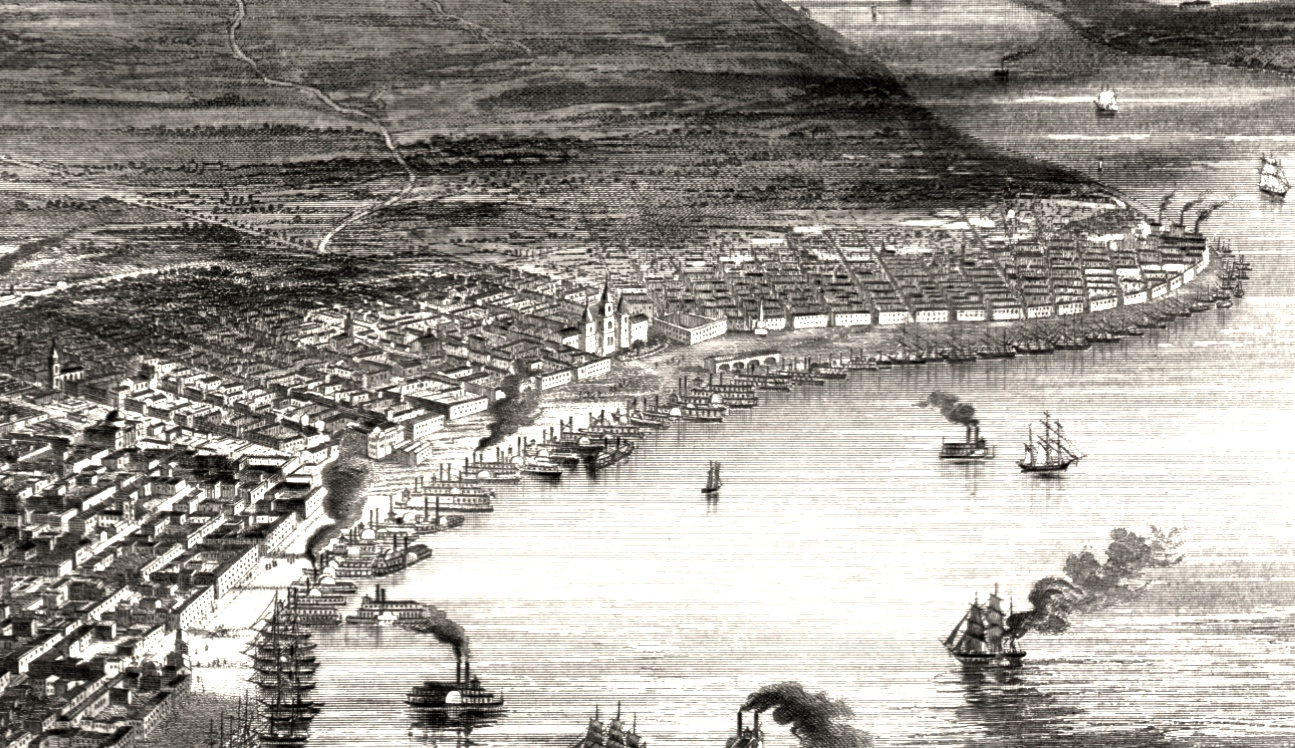

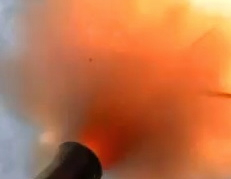
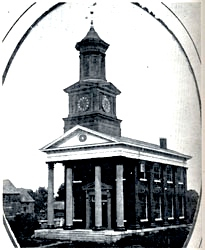
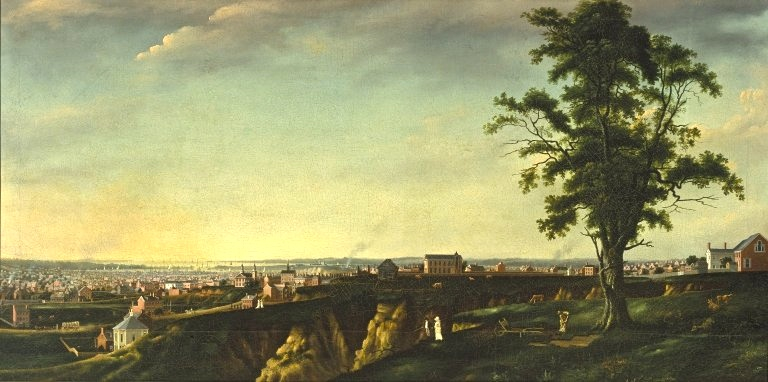






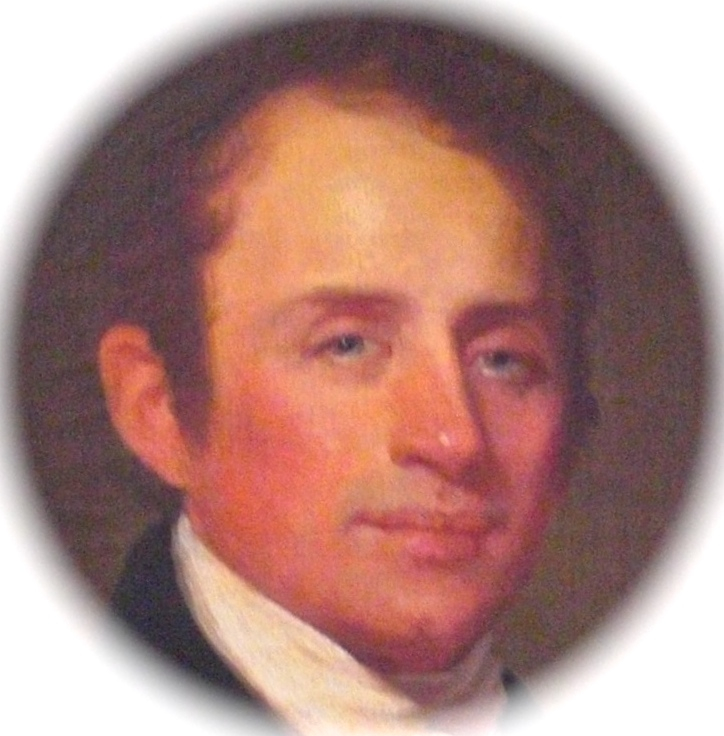







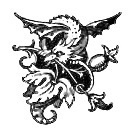















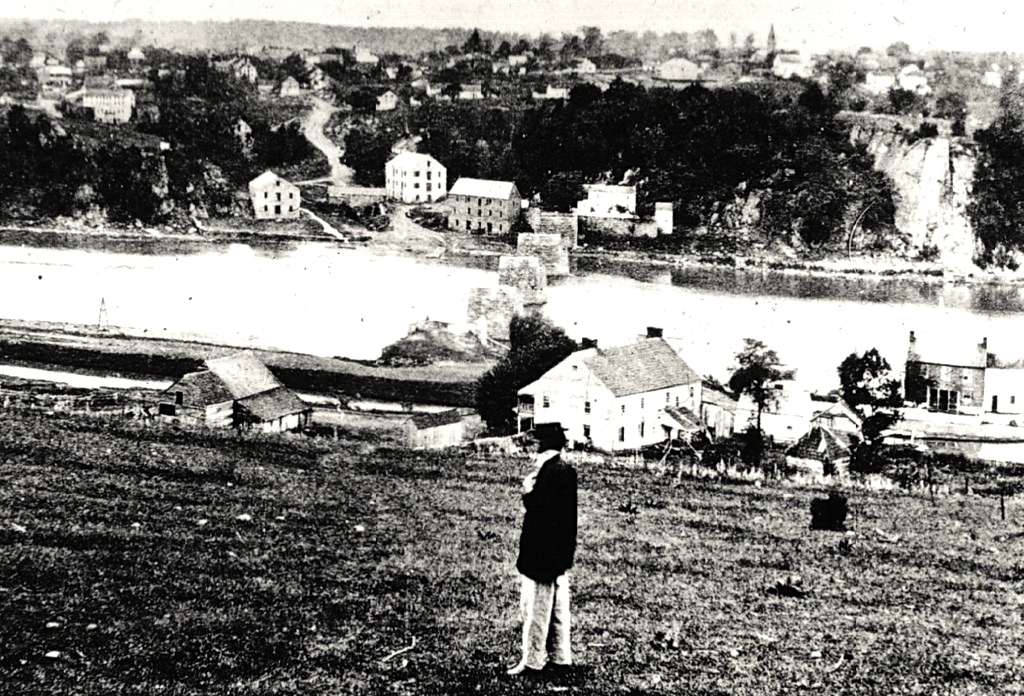
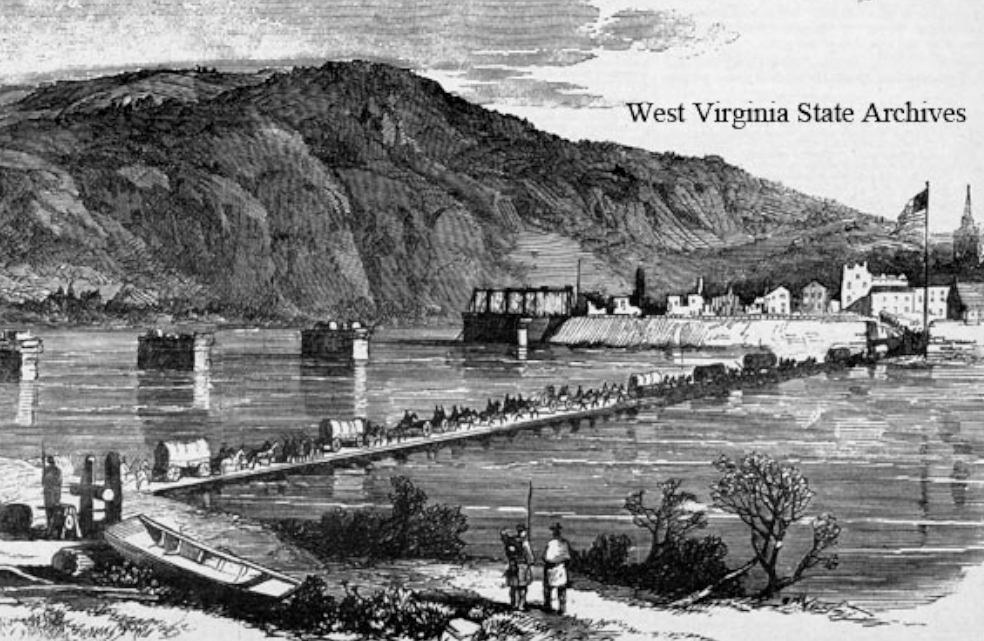







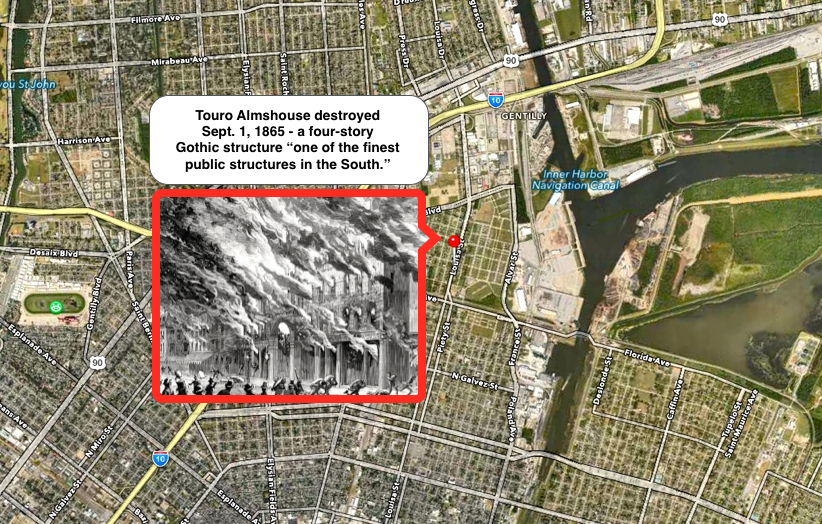
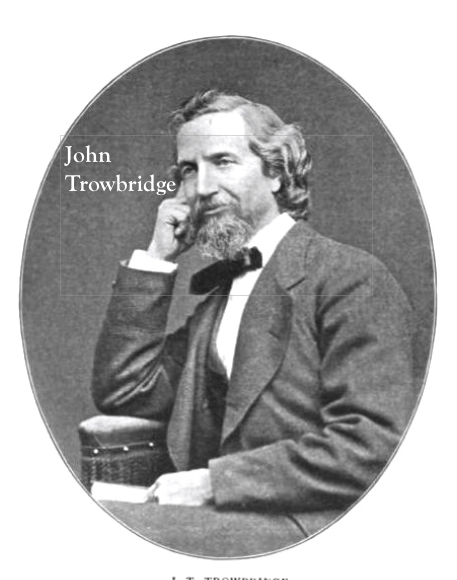


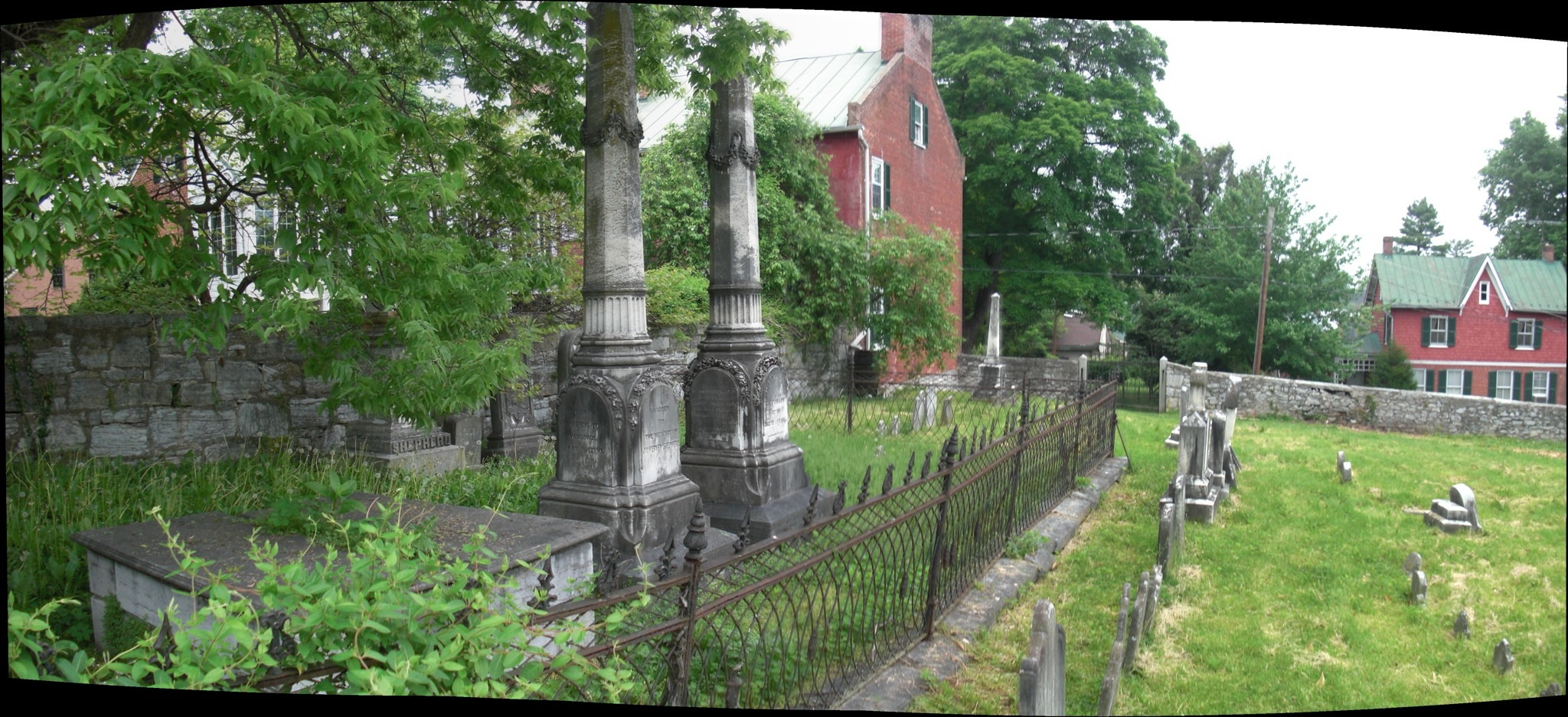
















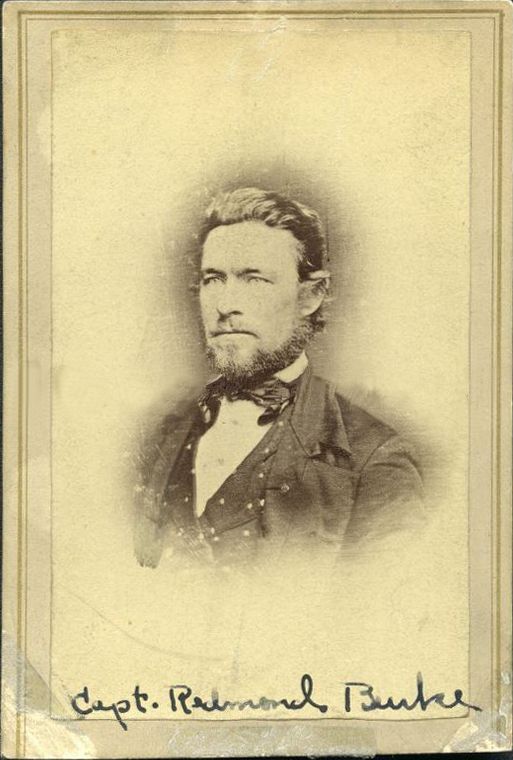



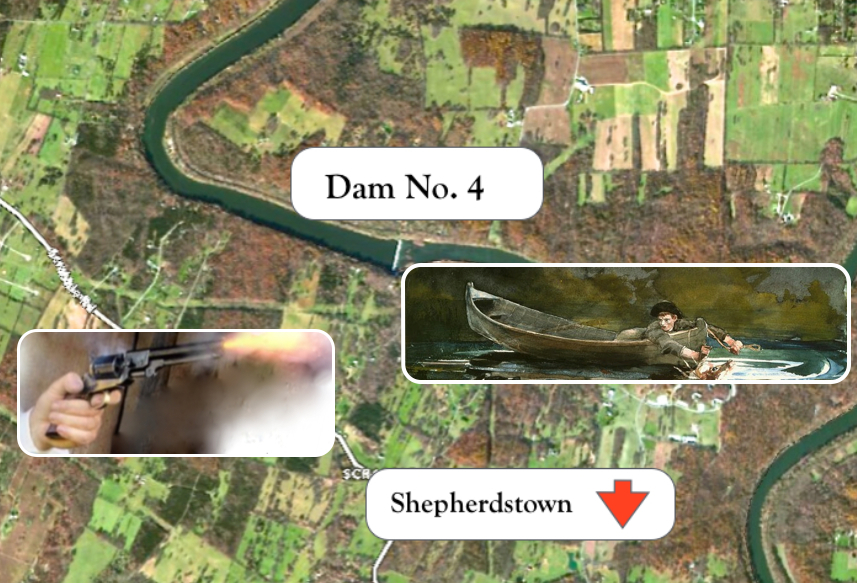




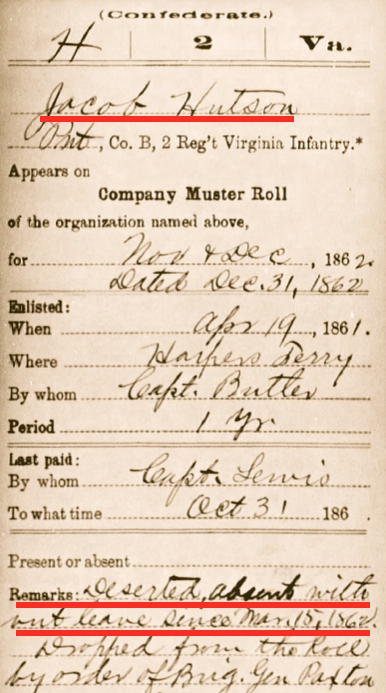

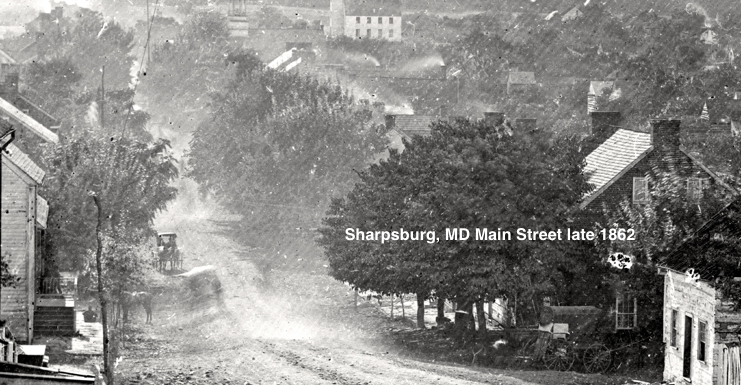



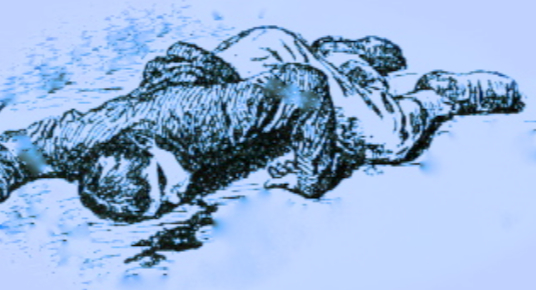






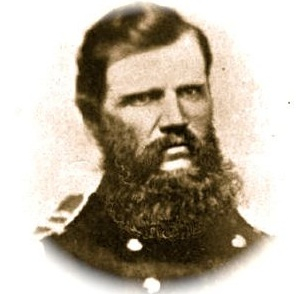
























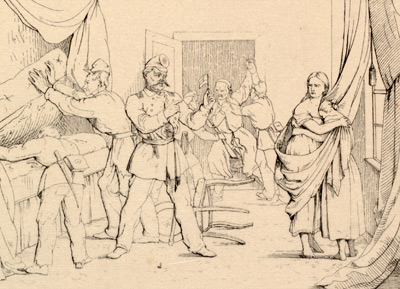







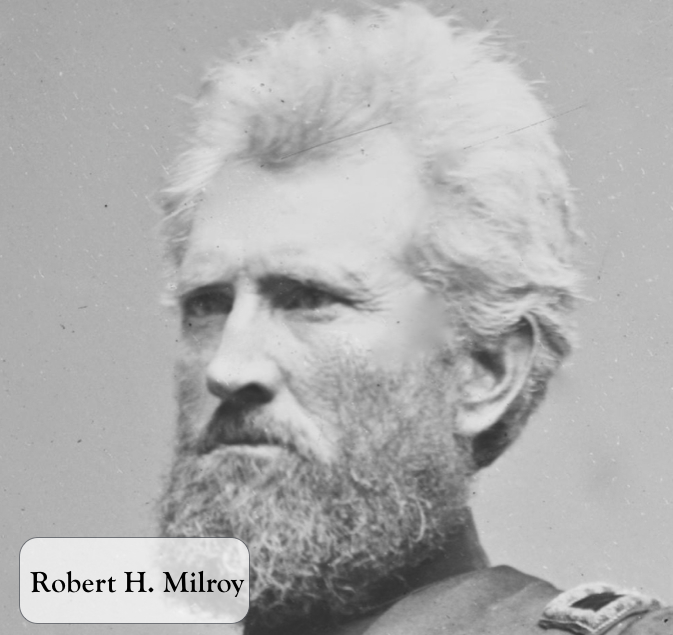

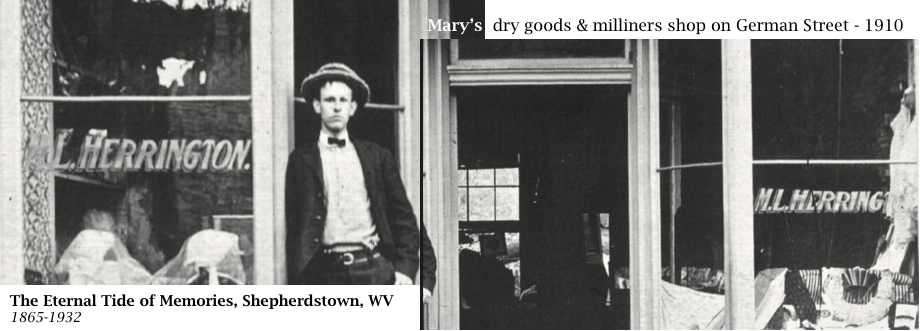




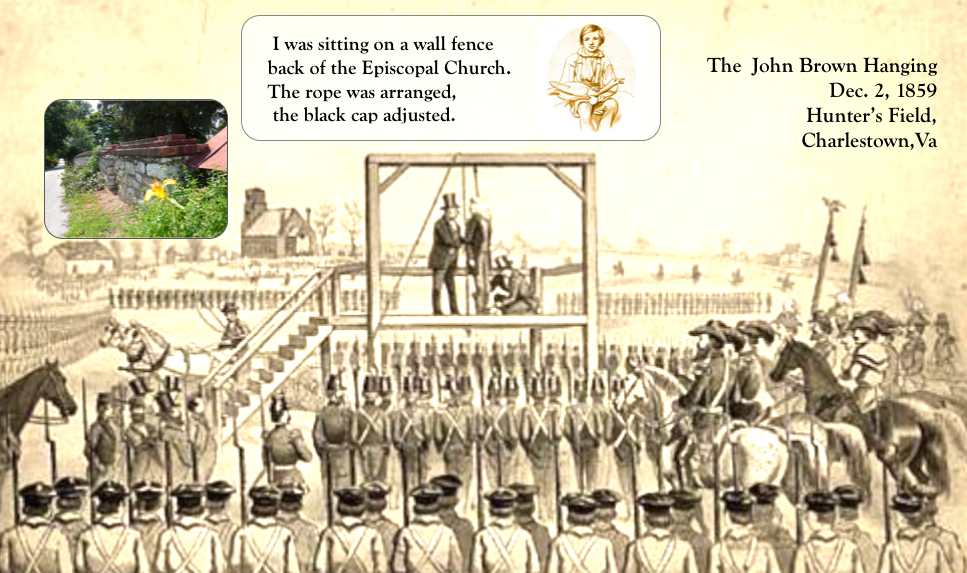



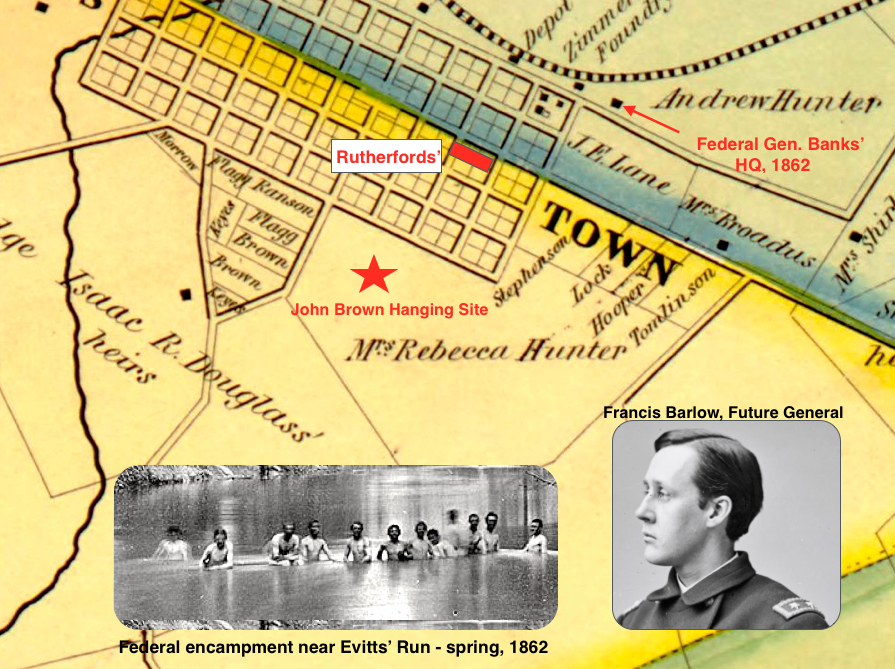





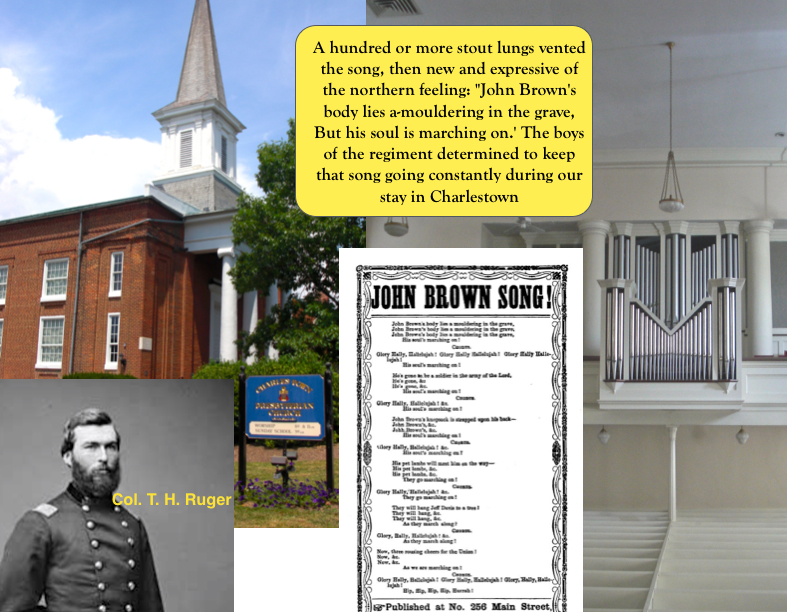




 September 12-15, 1862, Harper’s Ferry and environs: In position for attacking, surrounding and capturing Harper’s Ferry east of Halltown on Schoolhouse Ridge, Gen. Jackson was pleased to accept some delectables sent to him by Mrs. Rutherford, three miles to the west. After the Antietam Battle, the Confederate Army moves into Virginia and along the Opequon, with Gen. Stuart at the home of the Dandridge family, called The Bower in Jefferson County. Gen. Jackson’s men, and briefly General Robert E. Lee, encamped to the west in the vicinity of Bunker Hill, Va. (now West Virginia).
September 12-15, 1862, Harper’s Ferry and environs: In position for attacking, surrounding and capturing Harper’s Ferry east of Halltown on Schoolhouse Ridge, Gen. Jackson was pleased to accept some delectables sent to him by Mrs. Rutherford, three miles to the west. After the Antietam Battle, the Confederate Army moves into Virginia and along the Opequon, with Gen. Stuart at the home of the Dandridge family, called The Bower in Jefferson County. Gen. Jackson’s men, and briefly General Robert E. Lee, encamped to the west in the vicinity of Bunker Hill, Va. (now West Virginia). Thousands of wounded from the fighting filled homes across the County, including the Rutherfords in Charlestown. Richard Rutherford recalls what must have been a maturing experience helping a dying man – “Captain Keels” – from South Carolina.A Captain Keels from South Carolina was brought to our home very badly wounded and lived but a day or two. My mother left him to me to look after, as she and my sister were caring for others who filled the house. She and others of the family came at times to see how I was getting on. On the second day, I think it was, I noticed a change to his breathing and so called my mother. She came in just as he breathed his last. We came out and closed the door and then I returned with two soldier nurses and prepared his body for burial. – Rutherford, p. 34. (Keels was buried with a short service by Rev. Dutton in Edge Hill cemetery, along with many others.-JS)
Thousands of wounded from the fighting filled homes across the County, including the Rutherfords in Charlestown. Richard Rutherford recalls what must have been a maturing experience helping a dying man – “Captain Keels” – from South Carolina.A Captain Keels from South Carolina was brought to our home very badly wounded and lived but a day or two. My mother left him to me to look after, as she and my sister were caring for others who filled the house. She and others of the family came at times to see how I was getting on. On the second day, I think it was, I noticed a change to his breathing and so called my mother. She came in just as he breathed his last. We came out and closed the door and then I returned with two soldier nurses and prepared his body for burial. – Rutherford, p. 34. (Keels was buried with a short service by Rev. Dutton in Edge Hill cemetery, along with many others.-JS) My dear Mrs. Rutherford, Your delicious present and kind note reached me when I was near Halltown (September 14-15th-JS) and I much regret not being able to call and see you and return my thanks in person, but at this late day I beg you to accept them.I hope sometime to have the pleasure of again visiting your house & meeting you & yours. Please remember me very kindly to Mr. R and the family. Your much attached friend – T. J. Jackson
My dear Mrs. Rutherford, Your delicious present and kind note reached me when I was near Halltown (September 14-15th-JS) and I much regret not being able to call and see you and return my thanks in person, but at this late day I beg you to accept them.I hope sometime to have the pleasure of again visiting your house & meeting you & yours. Please remember me very kindly to Mr. R and the family. Your much attached friend – T. J. Jackson Young women from Charlestown and Shepherdstown were invited to this grand ball and fetched by van. The following day Gen. Stuart was ordered to cross the Potomac above Williamsport with 1,200 or 1,500 cavalry (NOTE: 1800, in Stuart’s report.-JS), and endeavor to ascertain the position and designs of the enemy. Being friends of Gen. Stuart who arranged the event, 22-year-old Ellen and 18-year- old Virginia (“Ginny”) Rutherford certainly were invited and it is hard to imagine anything that could keep them from going. (“Eighteen” was not too young for a woman to attend. 18-year-old Netta Edmonia Lee from Shepherdstown attended.-JS)
Young women from Charlestown and Shepherdstown were invited to this grand ball and fetched by van. The following day Gen. Stuart was ordered to cross the Potomac above Williamsport with 1,200 or 1,500 cavalry (NOTE: 1800, in Stuart’s report.-JS), and endeavor to ascertain the position and designs of the enemy. Being friends of Gen. Stuart who arranged the event, 22-year-old Ellen and 18-year- old Virginia (“Ginny”) Rutherford certainly were invited and it is hard to imagine anything that could keep them from going. (“Eighteen” was not too young for a woman to attend. 18-year-old Netta Edmonia Lee from Shepherdstown attended.-JS) 






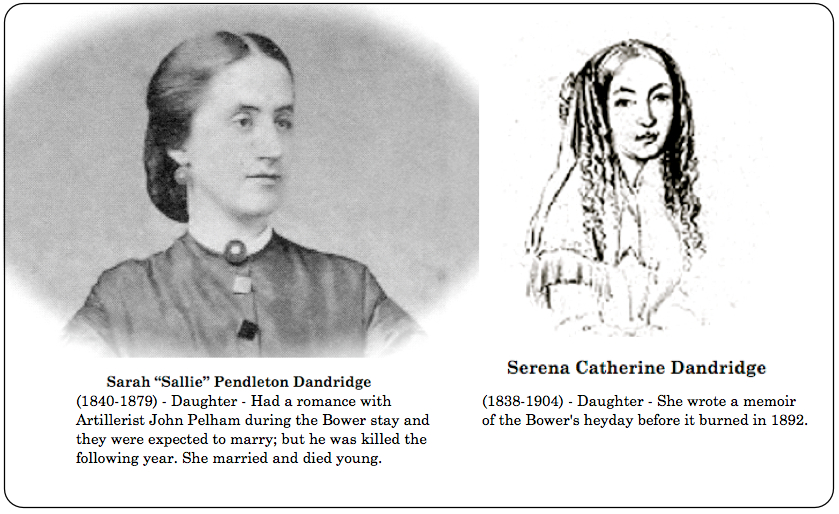


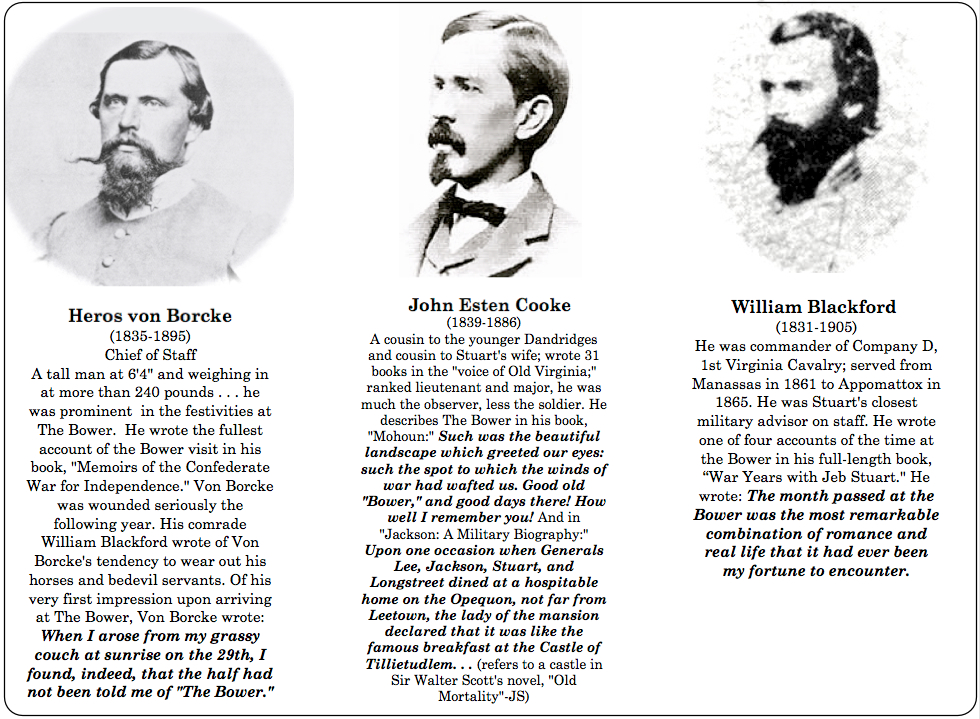

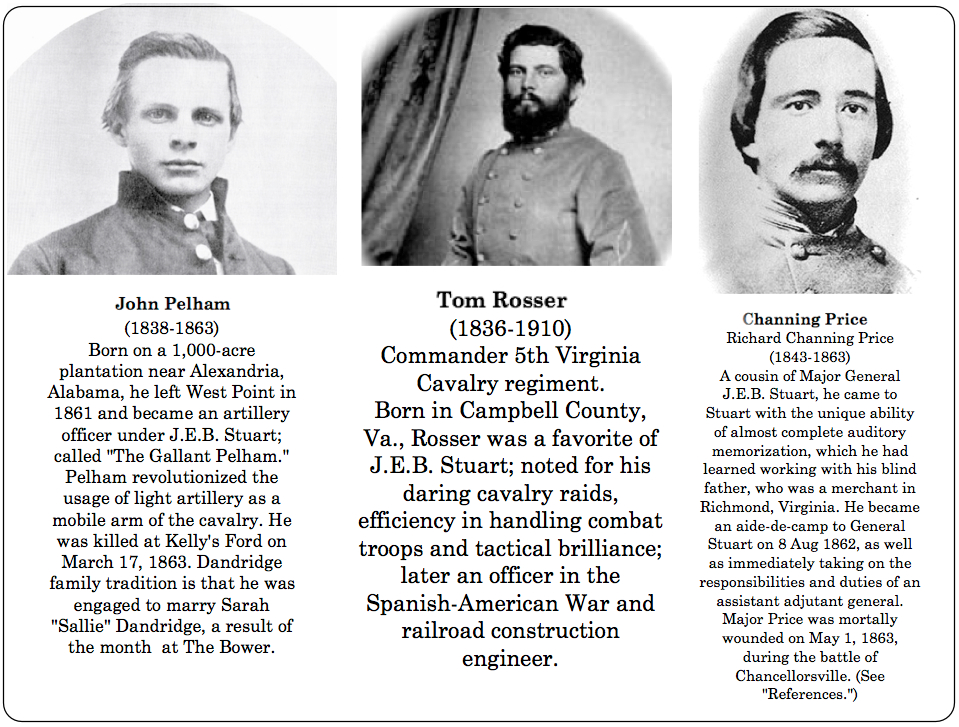



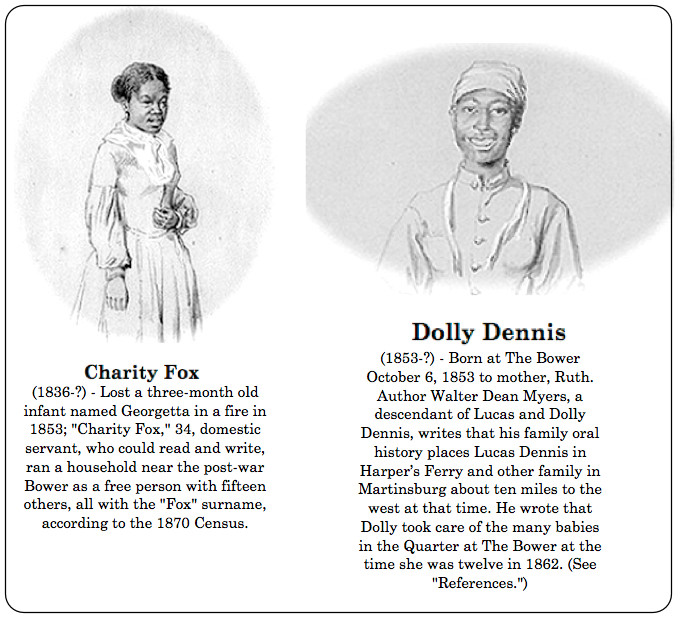
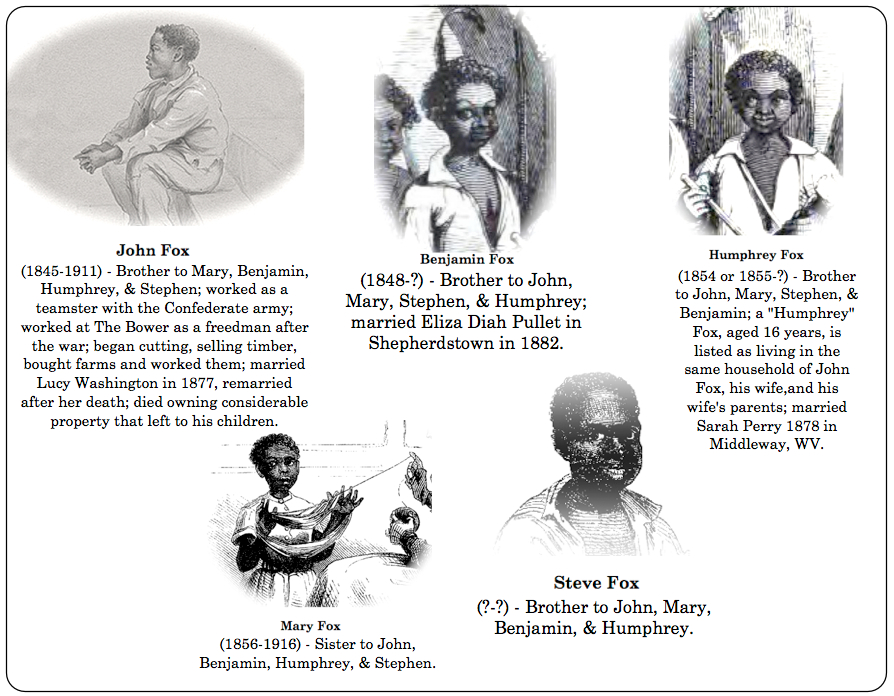 Tuesday evening, October 7 – Sweeney’s “orchestra” at The Bower as described by William Blackford:
Tuesday evening, October 7 – Sweeney’s “orchestra” at The Bower as described by William Blackford:  Rutherford recalled Gen. J.E.B. Stuart’s visit to the Rutherford home after his cavalrymen entered Pennsylvania from the Bower via Williamsport, MD and rode around the entire Federal army commanded by Gen. George McClellan, returning safely to the Bower on October 14th:Rutherford wrote: Gen. J.E.B. Stuart, after his raid on Chambersburg, camped at The Bower, the home of the Dandridges, a few miles from Charlestown, to rest his command, and, as was his custom when near to us, he came to visit us. He told us many things about his trip around the Yankee army. While there (at the Rutherford home), he took from his pocket a large oak leaf, pinned it in a floral album on the table and wrote: “This leaf was plucked by me in the Blue Ridge Pass on my return from the raid around General McClellan’s army,” with the date and other comments. Jeb Stuart often brought his aide, Sweeney, who was a famous banjo-picker, and used to sit on one side of the sofa with Sweeney on the other, telling him what to play. – Rutherford, p. 42.
Rutherford recalled Gen. J.E.B. Stuart’s visit to the Rutherford home after his cavalrymen entered Pennsylvania from the Bower via Williamsport, MD and rode around the entire Federal army commanded by Gen. George McClellan, returning safely to the Bower on October 14th:Rutherford wrote: Gen. J.E.B. Stuart, after his raid on Chambersburg, camped at The Bower, the home of the Dandridges, a few miles from Charlestown, to rest his command, and, as was his custom when near to us, he came to visit us. He told us many things about his trip around the Yankee army. While there (at the Rutherford home), he took from his pocket a large oak leaf, pinned it in a floral album on the table and wrote: “This leaf was plucked by me in the Blue Ridge Pass on my return from the raid around General McClellan’s army,” with the date and other comments. Jeb Stuart often brought his aide, Sweeney, who was a famous banjo-picker, and used to sit on one side of the sofa with Sweeney on the other, telling him what to play. – Rutherford, p. 42. Richard Rutherford wrote: The Union commander at Harper’s Ferry finally sent out several very large scouting parties, in all some four or five thousand men – infantry, cavalry and artillery. One, I remember, was under General Hancock and another under General Geary. The Confederates in number resisted, and they clashed hard on the hill just below our house. We all had to take to the cellar, and stay there until nearly all day, as shells and balls were thick and fast. After the clash, my brother and I picked up six or seven shells that had fallen in the next yard, in line with, but a bit short of our house. – Rutherford, pp. 29-30.Federal commander Winfield Hancock wrote of the same events in his report: On the 16th instant, in obedience to instructions, I marched toward Charlestown, Va., with my division and 1,500 men of other divisions, under command of Col. W.(illiam) R.(aymond) Lee, Twentieth Massachusetts Volunteers, and a force of cavalry, with a battery of four guns (horse artillery), Colonel Devin being in command thereof. . . . The advance of our column encountered the enemy’s pickets beyond Halltown, drove them in, and pursued until, when within short artillery range of the high ground this side of Charlestown, the enemy was found posted. He opened fire upon us with artillery. Our horse artillery battery, supported by Capt. M. A. Reno’s First Cavalry, then engaged the enemy, who opened fire from five guns, and deployed dismounted cavalry as skirmishers on their front and flanks. The town was at once taken possession of and the troops suitably disposed for defense. Toward evening our infantry advanced and occupied the heights surrounding the town, within artillery range. . . The command remained in Charlestown until about 2 pm. The next day (October 17th), when we received orders to return. . . Richard Rutherford wrote of their wounded Captain and his care-giver:
Richard Rutherford wrote: The Union commander at Harper’s Ferry finally sent out several very large scouting parties, in all some four or five thousand men – infantry, cavalry and artillery. One, I remember, was under General Hancock and another under General Geary. The Confederates in number resisted, and they clashed hard on the hill just below our house. We all had to take to the cellar, and stay there until nearly all day, as shells and balls were thick and fast. After the clash, my brother and I picked up six or seven shells that had fallen in the next yard, in line with, but a bit short of our house. – Rutherford, pp. 29-30.Federal commander Winfield Hancock wrote of the same events in his report: On the 16th instant, in obedience to instructions, I marched toward Charlestown, Va., with my division and 1,500 men of other divisions, under command of Col. W.(illiam) R.(aymond) Lee, Twentieth Massachusetts Volunteers, and a force of cavalry, with a battery of four guns (horse artillery), Colonel Devin being in command thereof. . . . The advance of our column encountered the enemy’s pickets beyond Halltown, drove them in, and pursued until, when within short artillery range of the high ground this side of Charlestown, the enemy was found posted. He opened fire upon us with artillery. Our horse artillery battery, supported by Capt. M. A. Reno’s First Cavalry, then engaged the enemy, who opened fire from five guns, and deployed dismounted cavalry as skirmishers on their front and flanks. The town was at once taken possession of and the troops suitably disposed for defense. Toward evening our infantry advanced and occupied the heights surrounding the town, within artillery range. . . The command remained in Charlestown until about 2 pm. The next day (October 17th), when we received orders to return. . . Richard Rutherford wrote of their wounded Captain and his care-giver:  In one of these battles Captain B. H. Smith (Benjamin H. Smith-JS), one of the Richmond Howitzer outfit, had his foot shot nearly off, and was brought into our house. As the Confederates were falling back, he was left with us. One of his men, by the name of “Red,” was left to nurse him. Dr. Mason and Dr. Cordell operated on his foot on our dining room table the same day, taking off a little more of his foot. “Red” was taking a basin of water into the operation for the doctors when the Yankees saw him on the porch and started to take him away. My mother rushed out and explained to them that the man was nursing his captain and they must not take him. One of them said: “But suppose he gets away?” My mother replied: “Then you can take me” – so they let him stay. Captain Smith and “Red” stayed with us until he was able to get around on crutches, when he returned to his home in Richmond. – Rutherford, pp. 29-30. Federal General Hancock found a hundred officers like Captain Smith in Charlestown, but couldn’t arrest them all because many were badly wounded:
In one of these battles Captain B. H. Smith (Benjamin H. Smith-JS), one of the Richmond Howitzer outfit, had his foot shot nearly off, and was brought into our house. As the Confederates were falling back, he was left with us. One of his men, by the name of “Red,” was left to nurse him. Dr. Mason and Dr. Cordell operated on his foot on our dining room table the same day, taking off a little more of his foot. “Red” was taking a basin of water into the operation for the doctors when the Yankees saw him on the porch and started to take him away. My mother rushed out and explained to them that the man was nursing his captain and they must not take him. One of them said: “But suppose he gets away?” My mother replied: “Then you can take me” – so they let him stay. Captain Smith and “Red” stayed with us until he was able to get around on crutches, when he returned to his home in Richmond. – Rutherford, pp. 29-30. Federal General Hancock found a hundred officers like Captain Smith in Charlestown, but couldn’t arrest them all because many were badly wounded:  While in Charlestown I appointed Col. J. R. Brooke, of the Fifty-third Pennsylvania Volunteers, military governor, the better to preserve order. About 100 officers and soldiers of the Confederate Army were found in the town, consisting entirely, it is believed, of surgeons, hospital attendants, convalescents, and sick. Twenty-six were sent to the provost-marshal at Harper’s Ferry, and 38 wounded and unable to be removed, were paroled. Time did not permit the paroling of all who were severely wounded, as they were scattered throughout the town, requiring more time than we had for the purpose, to find them. – W. HANCOCK, Chapter XIX, Official Record, Series I, Part 2, Vol. 19. pp. 91-92. Cornell Digital Library – The Making of America. 19 July 2011. Web. 29 January 2014.
While in Charlestown I appointed Col. J. R. Brooke, of the Fifty-third Pennsylvania Volunteers, military governor, the better to preserve order. About 100 officers and soldiers of the Confederate Army were found in the town, consisting entirely, it is believed, of surgeons, hospital attendants, convalescents, and sick. Twenty-six were sent to the provost-marshal at Harper’s Ferry, and 38 wounded and unable to be removed, were paroled. Time did not permit the paroling of all who were severely wounded, as they were scattered throughout the town, requiring more time than we had for the purpose, to find them. – W. HANCOCK, Chapter XIX, Official Record, Series I, Part 2, Vol. 19. pp. 91-92. Cornell Digital Library – The Making of America. 19 July 2011. Web. 29 January 2014. 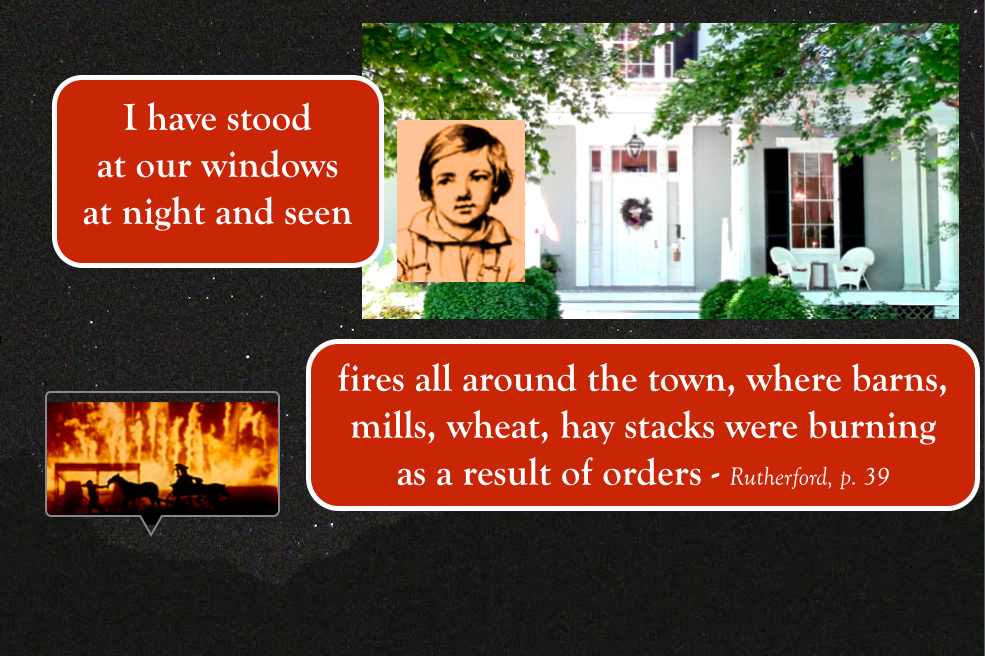 No one who did not actually live in or around Charlestown can realize the trying times we suffered during the four years of war. We could only wonder what trouble and sorrow the next day might bring to some of us. Often when a battle was in progress, our people would gather on the hills outside of town where we could hear the roar of cannon, and often even volleys of musketry . . .Very often we could not locate exactly where (the heavy fighting was in progress), but in the next day or two some of our boys would come in wounded or bring home the dead. – Rutherford, p. 33.
No one who did not actually live in or around Charlestown can realize the trying times we suffered during the four years of war. We could only wonder what trouble and sorrow the next day might bring to some of us. Often when a battle was in progress, our people would gather on the hills outside of town where we could hear the roar of cannon, and often even volleys of musketry . . .Very often we could not locate exactly where (the heavy fighting was in progress), but in the next day or two some of our boys would come in wounded or bring home the dead. – Rutherford, p. 33. We could get nothing in the way of clothing except gray cloth made by the factories in the county, so everyone dressed in gray. The ladies, dressed also in gray, made belts with pockets hanging to them under their skirts. When the cry went up: “Here come the Yankees,” my mother and sisters would run and fill these pockets with silverware and other valuables and what money my father might have at the time. They often carried this weight with them all day long, and at night would put the belts under their pillows. – Rutherford, p. 33.
We could get nothing in the way of clothing except gray cloth made by the factories in the county, so everyone dressed in gray. The ladies, dressed also in gray, made belts with pockets hanging to them under their skirts. When the cry went up: “Here come the Yankees,” my mother and sisters would run and fill these pockets with silverware and other valuables and what money my father might have at the time. They often carried this weight with them all day long, and at night would put the belts under their pillows. – Rutherford, p. 33. My brother and I, almost every day, would go into the country to some farmer’s house along the Baltimore and Ohio railroad and get newspapers which the trainmen would throw off as the train passed. This was the only way we got newspapers for a long time. Richmond papers were at a premium and we only got them when some of our own boys came home and brought them along. No matter what we were doing, when the papers came all work would stop as we rushed to hear the latest news. – Rutherford, p. 41.
My brother and I, almost every day, would go into the country to some farmer’s house along the Baltimore and Ohio railroad and get newspapers which the trainmen would throw off as the train passed. This was the only way we got newspapers for a long time. Richmond papers were at a premium and we only got them when some of our own boys came home and brought them along. No matter what we were doing, when the papers came all work would stop as we rushed to hear the latest news. – Rutherford, p. 41. His (Simpson’s) officers fled before the enemy, leaving their men to shift for themselves. These officers ran down the railroad near our house. I was in bed at the time. All at once I heard something whizz over me and strike the wall on the other side of the room. A shot had been fired into the room.” – Mary Rutherford Aisquith, The Farmer’s Advocate, September 8, 1934.Confederate Gen. John Imboden reports on shelling the Courthouse, capturing the soldiers of the 9th Maryland Infantry and their flight past the Rutherfords en route to Harper’s Ferry, who claimed they were being fired upon from homes, including the Rutherford’s:
His (Simpson’s) officers fled before the enemy, leaving their men to shift for themselves. These officers ran down the railroad near our house. I was in bed at the time. All at once I heard something whizz over me and strike the wall on the other side of the room. A shot had been fired into the room.” – Mary Rutherford Aisquith, The Farmer’s Advocate, September 8, 1934.Confederate Gen. John Imboden reports on shelling the Courthouse, capturing the soldiers of the 9th Maryland Infantry and their flight past the Rutherfords en route to Harper’s Ferry, who claimed they were being fired upon from homes, including the Rutherford’s: I found the enemy occupying the court-house, jail, and some contiguous buildings in the heart of the town, all loop-holed for musketry, and the court-house yard inclosed by a heavy wall of oak timber. To my demand for a surrender Colonel Simpson requested an hour for consideration. I offered him five minutes, to which he replied, “Take us if you can.” I immediately opened on the buildings with artillery at less than 200 yards, and with half a dozen shells drove out the enemy into the streets, when he formed and fled toward Harpers Ferry. – J. IMBODEN (Commander of Confederate force), Chapter XLI, Official Record, Series I, Part 1, Volume 29, pp. 490-492. Cornell Digital Library – The Making of America. 19 July 2011. Web. 29 January 2014.
I found the enemy occupying the court-house, jail, and some contiguous buildings in the heart of the town, all loop-holed for musketry, and the court-house yard inclosed by a heavy wall of oak timber. To my demand for a surrender Colonel Simpson requested an hour for consideration. I offered him five minutes, to which he replied, “Take us if you can.” I immediately opened on the buildings with artillery at less than 200 yards, and with half a dozen shells drove out the enemy into the streets, when he formed and fled toward Harpers Ferry. – J. IMBODEN (Commander of Confederate force), Chapter XLI, Official Record, Series I, Part 1, Volume 29, pp. 490-492. Cornell Digital Library – The Making of America. 19 July 2011. Web. 29 January 2014. Another time I saw R. W. Baylor, Jr., a cousin of mine . . . and though he did not belong to the army, and lived at home with his mother and younger members of his family, he always carried a revolver. He was on his way into town one day and had ridden down under the stone bridge (Evitt’s Run under Washington Street-JS) to give his horse some water. He saw five Yankees turn the corner from the Berryville Pike going to Harper’s Ferry. One was leading an extra horse and (Baylor) was only a block from them. Baylor drew his revolver and with a Rebel yell, he took after them. They bolted pell mell through the town with Tud (as we called him) after them. He caught the Yankee who was leading the extra horse on Hunter’s Hill and returned with the prisoner and two horses. He turned the man loose, but took the two horses home with him. With his own horse and the other two he put out a crop of wheat for the home folks – then took his horse and went off into the army. – Rutherford, p. 37.
Another time I saw R. W. Baylor, Jr., a cousin of mine . . . and though he did not belong to the army, and lived at home with his mother and younger members of his family, he always carried a revolver. He was on his way into town one day and had ridden down under the stone bridge (Evitt’s Run under Washington Street-JS) to give his horse some water. He saw five Yankees turn the corner from the Berryville Pike going to Harper’s Ferry. One was leading an extra horse and (Baylor) was only a block from them. Baylor drew his revolver and with a Rebel yell, he took after them. They bolted pell mell through the town with Tud (as we called him) after them. He caught the Yankee who was leading the extra horse on Hunter’s Hill and returned with the prisoner and two horses. He turned the man loose, but took the two horses home with him. With his own horse and the other two he put out a crop of wheat for the home folks – then took his horse and went off into the army. – Rutherford, p. 37. One Sunday morning, we were all at church, except my father, who had stayed home. Some ten or fifteen of Baylor’s boys had come into town, and as all seemed quiet and peaceful, some of them had ventured to attend church. The minister was in the midst of his sermon when we were startled by several shouts out in front. All made a rush to get the soldiers out first. A squad of Yankees had passed, shooting at some of our boys who were visiting at their homes, but who had fled at the first alarm of their picket. Those at church had their horses tied behind the church and so succeeded in getting away over the fence in the rear before the main body of the Yankees got as far as the church. One of our men, a friend of my father’s – Newton Sadler, had left his porch talking when the Yankees dashed by. My father put him up in the attic right under a slate roof, and as it was very warm weather, he almost roasted to death. My sister took him ice water often through the day, which enabled him to survive the imprisonment. These Yankees had orders from General Hunter to burn Mr. Andrew Hunter’s house. They were first cousins. Andrew Hunter was home, but they caught him and brought him to our house, where his daughters were; so now we were in a tight place with Mr. Hunter and Yankee officers downstairs and Nate Sadler hid up in the attic! – Rutherford, p. 38.My mother talked with the officer in command (Captain William Franklin Martindale of the 1st New York Cavalry-JS) and tried to persuade them not to burn the Hunter house, but to give her time to go to Harper’s Ferry to see General Kelley, who was of no use. The men carried great armfuls of hay into each room and put it all to the match. The beautiful home was soon in flames. Nothing was saved, but the clothes the family wore. My mother and I, with the help of an old Irishman who lived with us, dragged the piano to the door and would have gotten it out had the soldiers not made us let it alone. When I saw that beautiful home in ruins, I thought no punishment was too great for General Hunter. – Rutherford, p. 39.
One Sunday morning, we were all at church, except my father, who had stayed home. Some ten or fifteen of Baylor’s boys had come into town, and as all seemed quiet and peaceful, some of them had ventured to attend church. The minister was in the midst of his sermon when we were startled by several shouts out in front. All made a rush to get the soldiers out first. A squad of Yankees had passed, shooting at some of our boys who were visiting at their homes, but who had fled at the first alarm of their picket. Those at church had their horses tied behind the church and so succeeded in getting away over the fence in the rear before the main body of the Yankees got as far as the church. One of our men, a friend of my father’s – Newton Sadler, had left his porch talking when the Yankees dashed by. My father put him up in the attic right under a slate roof, and as it was very warm weather, he almost roasted to death. My sister took him ice water often through the day, which enabled him to survive the imprisonment. These Yankees had orders from General Hunter to burn Mr. Andrew Hunter’s house. They were first cousins. Andrew Hunter was home, but they caught him and brought him to our house, where his daughters were; so now we were in a tight place with Mr. Hunter and Yankee officers downstairs and Nate Sadler hid up in the attic! – Rutherford, p. 38.My mother talked with the officer in command (Captain William Franklin Martindale of the 1st New York Cavalry-JS) and tried to persuade them not to burn the Hunter house, but to give her time to go to Harper’s Ferry to see General Kelley, who was of no use. The men carried great armfuls of hay into each room and put it all to the match. The beautiful home was soon in flames. Nothing was saved, but the clothes the family wore. My mother and I, with the help of an old Irishman who lived with us, dragged the piano to the door and would have gotten it out had the soldiers not made us let it alone. When I saw that beautiful home in ruins, I thought no punishment was too great for General Hunter. – Rutherford, p. 39. Stealthily moving on, the sleeping camp was entered, and the occupants awoke to find themselves prisoners. There was sudden confusion and scampering among the enemy. Some twenty of their number, lodged in a stone house nearby, opened fire on us. Recognizing the gravity of the situation, we rushed upon the house, and, seizing the doors and windows, poured several volleys into the building. Just as George Creaton (Crayton), my brother Robert W. Baylor, Jr. (a boy of seventeen) and myself entered the door, several shots were fired by the inmates, one mortally injuring my brother and another severely injuring Creaton. After a few minutes the cry of surrender came from the group huddled together in the building, and the firing ceased. My brother and Creaton were removed to the house of Dr. Mason, who had been for years our family physician, and where I knew they would be well cared for. My brother died in a few hours, but Creaton rallied for a while and died soon after the close of the war. Baylor, pp. 265-266.
Stealthily moving on, the sleeping camp was entered, and the occupants awoke to find themselves prisoners. There was sudden confusion and scampering among the enemy. Some twenty of their number, lodged in a stone house nearby, opened fire on us. Recognizing the gravity of the situation, we rushed upon the house, and, seizing the doors and windows, poured several volleys into the building. Just as George Creaton (Crayton), my brother Robert W. Baylor, Jr. (a boy of seventeen) and myself entered the door, several shots were fired by the inmates, one mortally injuring my brother and another severely injuring Creaton. After a few minutes the cry of surrender came from the group huddled together in the building, and the firing ceased. My brother and Creaton were removed to the house of Dr. Mason, who had been for years our family physician, and where I knew they would be well cared for. My brother died in a few hours, but Creaton rallied for a while and died soon after the close of the war. Baylor, pp. 265-266. References:
References:



